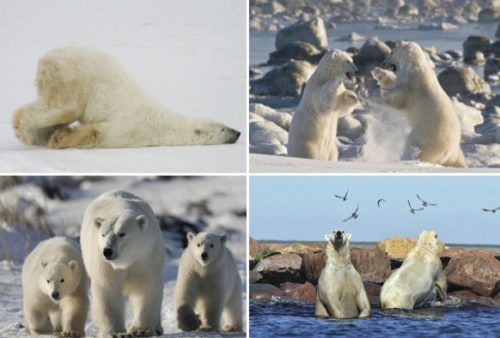Never Use a Preposition to End a Sentence With
While reading “The Grammar Guru” (July/August 2013), I recalled Winston Churchill’s response to a punctilious editor who had chided him for ending a sentence with a preposition. Churchill’s memorable and oft quoted retort was “This is the sort of English up with which I will not put.”
Mel B. Yoken, Ph.D.
Chancellor Professor Emeritus of French Language and Literature
University of Massachusetts Dartmouth

Dear Professor Yoken,
In colleges and universities, students from time to time lead a cow upstairs and into an administrator’s office. The prank is popular because while you can lead a cow upstairs, you can’t lead it downstairs. I know a number of cows like this. They’re the bogus usage rules that self-appointed grammarians herd into our national consciousness. It isn’t long before we can’t get them—the pundits and their rules—out.
One of the most hefty and intractable bovines is that of using of a preposition to end a sentence. The rule banishing terminal prepositions from educated discourse was invented by the late-17th-century British critic and poet John Dryden, who reasoned that preposito in Latin means something that “comes before” and that prepositions in Latin never appear at the end of a sentence. Dryden even went so far as to re-edit his own works in order to remove the offending construction. A bevy of prescriptive grammarians have been preaching the dogma ever since.
Unfortunately, Dryden neglected to consider two crucial points: First, the rules of Latin don’t always apply to English. There exist vast differences between the two languages in their manner of connecting verbs and prepositions. Latin is a language of cases, English a language of word order. In Latin, it is physically impossible for a preposition to appear at the end of a sentence. Second, the greatest writers in English, before and after the time of Dryden, have freely ended sentences with prepositions. Why? Because the construction is a natural and graceful part of our English idiom.
Here are a few examples from the masters:
- Fly to others that we know not of — William Shakespeare
- We are such stuff / As dreams are made on. — William Shakespeare
- Houses are built to live in, not to look on. — Francis Bacon
- What a fine conformity would it starch us all into.— John Milton
- … soil good to be born on, good to live on, good to die for and to be buried in. — James Russell Lowell
- All words are pegs to hang ideas on. — Henry Ward Beecher
The final preposition is one of the glories of the English language. If we shackle its idioms and muffle its music with false rules, we diminish the power of our language. If we rewrite the quotations above to conform to Dryden’s edict, the natural beauty of our prose and verse is forced to bow before a stiff mandarin code of structure. “Fly to others of whom we know not”; “All words are pegs upon which to hang ideas”—now the statements are artificial—people simply don’t talk like that—and, in most cases, wordier.
The most widely circulated joke about the terminal preposition is the one you talk about (or should that be “about which you talk”?).
A variation on this story concerns a newspaper columnist who responded snappily to the accusation that he was uncouthly violating the terminal preposition “rule”: “What do you take me for? A chap who doesn’t know how to make full use of all the easy variety the English language is capable of? Don’t you know that ending a sentence with a preposition is an idiom many famous writers are very fond of? They realize it’s a colloquialism a skillful writer can do a great deal with. Certainly it’s a linguistic device you ought to read about.”
For the punster there’s the setup joke about the prisoner who asks a female guard to marry him on the condition that she help him escape. This is a man attempting to use a proposition to end a sentence with.
Then there’s the one about the little boy who has just gone to bed when his father comes into the room carrying a book about Australia. Surprised, the boy asks: “What did you bring that book that I didn’t want to be read to out of from about Down Under up for?”
Now that’s a sentence out of which you can get a lot.
My favorite of all terminal preposition stories involves a boy attending public school and one attending private school who end up sitting next to each other in an airplane. To be friendly, the public schooler turns to the preppie and asks, “What school are you at?”
The private schooler looks down his aquiline nose at the public school student and comments, “I happen to attend an institution at which we are taught to know better than to conclude sentences with prepositions.”
The boy at public school pauses for a moment and then says: “All right, then. What school are you at, dingbat!”
Richard Lederer
Grammar Guru
Eleven Jewish Korean Vets
“You come from a family of addicts,” her mother warns her. Amy’s been slipping away to the alley behind their Chicago apartment for many more purposes than her mother knows. But her mother has just washed Amy’s favorite jacket, and behold! (oy!) found a soggy remnant of a cigarette stub in the pocket.
Amy the adult will hate cigarette smoking, although she will not be averse to inhaling a little weed now and again. As an 8-year-old, however, her main concern is simply for the safety of her secret stash of Camels hidden under a pile of abandoned Barbie dolls in her closet, cigarettes stolen from E.J. Korvettes, a mere three-block walk from most points of her limited universe.
Despite the confines of her narrow existence, Amy manages to do as she wishes; the secretness of it all, a thing she loves. She is an impetuous, strong-minded child who steals candy, cigarettes, pen knives, small toys — whatever she can easily slip inside her pockets and later stash in the several hiding places she’s discovered around their apartment and in the alley. She also loves to toss basketballs in the alley with some very adult butch women, a thing she will always love to do.
Now watching her mother’s face gradually go from bright red to pink, she understands her mother’s anger is already fading. Her mother is an intelligent woman with the long, slender fingers of a musician and a razor-sharp tongue, though her anger tends to flicker out nearly as fast as it flares; a woman who is as easily distracted by a bug on the wall as a cool fall breeze, or a memory that floats behind her eyes and lands squarely on the forefront of her mind.
Amy calls her parents Mitzi and Morris. Jewel, her sister, she calls Butt Face or sometimes just Butt.
At 13, Jewel weighs more than her mother, Mitzi. More than her father, Morris. She was named Jewel after Morris’ mother, a fact she will never forgive. In the dark shadows of their bedroom, Jewel has confided to Amy she would give up anything, anything at all except maybe food, to have a name like Susan or Linda, or even Babs.
Their father Morris’ addictions are Peppermint Schnapps, baseball, and sleeping on the couch in daylight hours. He works nights driving a cab and these are the only hours on the couch he has. Amy ignores him, ignores everything that doesn’t concern her, which of course is everyone and everything — perhaps the ‘things’ most of all. All the heavy furniture, doilies, old gray-and-white family pictures, silver candle sticks, hand-dipped Shabbat candles, buffet overflowing with Passover dishes, silver platters, stupid ceramic figurines — far too many to count — things which seem to Amy to be overtaking the house, crowding her out.
She will grow from a skinny, 8-year-old tomboy into a small-framed, femme woman, which to a 20-something Amy will mean she fusses with her hair and cares what she wears. Later, her femme identity will acquire more nuances — a certain fluid walk, talk, at times a stance with hands in pockets, as if fearful of what her hands might do if free. She will be attracted to women but there will also be two or three men in her life. She will consider herself a primarily woman-identified woman and (although not strictly) a monogamous person. When she is with women, she won’t think of men at all; then again, there will be a few men she sometimes thinks about, mainly Richard Gere types, i.e., handsome, sexy, and emotionally distant. This might apply to anyone to whom she will be attracted.
Amy the adult will be much like Amy the child, who is attracted to those things not easily within her reach. At eight, she has been shoplifting for over a year and is now quite skillful at it. And there are many stores within walking distance from her school in which to apply her natural aptitude. Amy goes to a public school close to a candy store, drug store, the A&P, and of course E.J. Korvettes.
Amy has always loved that store, maybe even more than Mitzi, and while Mitzi shops for Playtex bras on sale and discount shirts for the family, Amy lifts a set of press-on nails and a Swiss army knife look-alike and slips them into the pockets of her favorite jacket. With elastic around the bottom that hugs her slim hips, it sports a zipper instead of buttons and has two deep pockets both inside and outside. It is 100 percent a boy’s jacket, all the more reason it’s Amy’s favorite, an unconscious but wise choice of Mitzi’s, pulled from a Korvettes sale bin.
Heading home from their shopping trip, the air is brisk and the streets are filled with the woody smell of burnt leaves. Autumn is Amy’s favorite season. She is happy to be skipping through the fallen leaves alongside Mitzi, who swings her arms filled with bags of discounts; she is lighthearted and even cheerful, and then Mitzi announces Amy needs to start Hebrew school so when she reaches 13 she can be bas mitzvahed.
Amy couldn’t care less about being bas mitzvahed. She could care less about religion and even less about being Jewish, which in her 8-year-old opinion has some pretty stupid traditions. She’s been grounded more than once for putting meat silverware into the dairy drawer. She’s never tasted bacon or been allowed inside a McDonald’s, nor has she ever awoken to Hanukkah presents lying in sparkling splendor under a Christmas tree. Why does she need to be bas mitzvahed if she never intends to be Jewish? “Why can’t we be Catholic?” she asks Mitzi.
“You think that’s better? You think you can throw away your ancestry so easily? Well guess what? Guess where E.J. Korvettes gets its name? Take a guess.” Mitzi doesn’t wait for an answer. “Eleven Jewish Korean Vets,” she says, and smiles smugly.
“So?” Amy refuses to show it, but she is surprised. Surprised all the way down to the toes wiggling inside her scuffed-white Keds.
“So you love Korvettes,” says Mitzi. “And it’s Jewish.”
She will never go there again, she sulks, but her fingers are crossed. She has loved that store for as long as she can remember. Longer it seems to her than she’s loved Mitzi.
She would also rather eat bugs, eat dirt, do almost anything than go to Hebrew school. She bounces on the sidewalk, stamping the crisp leaves underfoot as she deftly skips over the cracks, and makes her plans. She’ll make jokes in class and not do her homework. She’ll go behind the temple and smoke Camels and get expelled.
By the time she has thought of all the plans she is able, they are home. Amy heads for the bedroom and plops down on her bed. She is thankfully alone, her sister somewhere else, likely stuffing her face. Her eyes close and behind her lids, she silently greets her friends, Sheri and Diane. She greets them silently because of course they have no need to speak — each knows what the other is thinking — and moments later the three do what they always do, which is to hold their thin arms straight out in front of them and take off out of Amy’s window and over her house with its rules about this and its rules about that. They easily navigate themselves above the tallest buildings, houses, parks and within minutes traverse the great expanse of Lake Michigan to the opposite shore where their hideout lies — a cool, craggy, magical cave, filled with Amy’s stolen loot: three Swiss Army knives; a small screwdriver set; a handheld, battery-run tape player; a collection of the Shirelles (“Will You Love Me Tomorrow,” “Soldier Boy,” and of course, “Tonight’s the Night”); two packs of unfiltered Camels; a bag of richly colored glass and quartz marbles; and a cache of Hershey bars. A fine haul, they agree. They listen to the Shirelles while they smoke their Camels and fly in circles around the cave, joyful and buzzed, their gangly bodies free, replete with delicious grace.
Her imaginary adventures with Sheri and Diane will fade with time, almost certainly by the time she reaches the seventh grade, the beginning of her social anxieties. Looking back, Amy the adult will long to recapture the exhilaration of her youthful imagination. She will remember how her flying friends helped her endure a year of Hebrew school, and how she got out of going back for another year of Hebrew school by purposely flunking out, her (and their) best idea yet. She will also remember the lifting of items and hiding them in the alley behind their apartment building, events that will seem to be linked together in her mind as if they have melded into one. Other details, like the now defunct Korvettes department store she so adored and yet wished to disavow, will fade away, a fuzzy memory floating underneath the surface of her mind nearly full with the urgency of everyday things.
Her adult mind will work in a diffused, sometimes incoherent manner, leaving her to wonder exactly what those daily urgencies are. Other times, memories of the past will push up to the edges of her mind and present themselves with great clarity. Memories of being a wild little kid with a flat chest and long, stick-like legs, her childhood mind on the simplest things: not getting caught doing the things she loved, not getting lectured on the family’s addictions, and not having to be bas mitzvahed. Big deals to a kid, her adult self will suppose.
Her sister, Jewel, will go through the whole bas mitzvah thing, and in her 20s become a fearsome coke head. In her 30s, she will voluntarily enter rehab, and marry for the first time at age 40 to a divorced man who pays most of his commissions to child support for his three semi-grown kids.
But Amy the child has too many of her own devils to deal with to pay much attention to Jewel’s current addiction, which of course at 13 is food.
With no small amount of irony (which she will appreciate many years later), it is at Amy’s beloved, bedeviled Korvettes where she gets caught red-handed. In one deep pocket of her fall jacket is a twenty-dollar bill, stolen from her mother’s purse, and in another, a thimble and a pair of sewing shears lifted from Notions. Moving onto Records, she has just placed her hand on a tape by The Supremes, when a tall, prickly-faced boy suddenly grabs her by the jacket sleeve and drags her into the aisle.
“You’re dead meat. I gotta take you to the office now. You know what that means?”
Amy could guess. A picture of fat Butt Face Jewel laughing at her, of Morris and Mitzi yelling at her and maybe grounding her for life, flashes through her brain. She tries thinking of something to say, anything at all, only to discover her brain has stopped working and is trembling like the rest of her, making her tremble all the more.
The boy can see her skinny legs shaking in her pedal pushers. By God, she is one of the scrawniest human beings he’s ever seen. This is his first job, his first promotion from cashier to security one week ago today, and he takes it all very seriously. Serious enough to grab an 8-year-old by the britches and haul her skinny ass to the Security Room. If need be, he’ll carry her there.
Later in life, when her girlfriend stuns her with her sexual prowess, Amy will be shocked to realize she can still be surprised. She will have become a woman who considers herself a person no longer able to be surprised by much in life, who can count on one hand the times she was ever surprised. The day she got busted in the Record department, the day she found out she could hate something she also loved, the first time she made love to a woman and discovered there was no turning back. She will be able to add to her list this woman who gives her an orgasm so fierce her legs shake afterwards for hours. A little like her 8-year-old legs now dangling from a chair in the Security Room as she waits for Mitzi to arrive.
“There are two things I can’t stand: a sneak and a thief,” says Mitzi. Heading home, Amy stepping on the cracks (break your mother’s back), Mitzi so angry she is nearly running. She tosses out question after question. “Don’t we give you all you need? What am I going to do with you? What? How am I going to tell your father? Where did you get twenty dollars anyway? And why would you steal if you could buy it?” Amy doesn’t know, doesn’t know, doesn’t know. Perhaps she will never know.
Not even when she turns 30 and goes into a year of costly therapy will she receive an answer to these questions. Perhaps if the therapist were to tell her stealing was an act of self-love, a way of giving yourself something you want for the pure pleasure of taking it, she might believe it. But the therapist will be a pretty Jewish woman with intelligent brown eyes and big hoop earrings who will invite her out for a drink after their fifth session. A woman more interested in getting into her pants than her brain. Not that Amy won’t be aware.
Amy will be aware of many things during her short year of therapy. Among other painful memories, she will recall she had few real friends before college and ponder the reasons. She may have been a skinny teenager, but if her lovers were any judge, she was definitely not ugly. And she was sometimes entertaining, wasn’t she? Or adventurous at least. Why was it so hard to make friends?
Was she too eager? she will wonder, or too standoffish? Did she reek of desperation, or don’t-come-near-me? High school was the worst of all. She was a good student when she put her mind to it, which was not often. And there was that confusion about friendships and loyalties, and about boys, and girls who didn’t like her clothes, or her sense of humor, or her boastful stories of getting high smoking weed behind the gym during football games with her boyfriend, whomever that was, depending on the day, the month, the year. At least the boys liked her well enough.
In primary school, she will tell the therapist, she had yet to fall in love, although she certainly had her share of crushes — with a tough boy in the seventh grade who bragged he stole cars, with Sally Metzger, a girl in her third-grade class who already had budding, young breasts, and of course, with all of the butch women with whom she played basketball.
One of the butch women in particular, she will remember, was maybe 15 or 16, a lot younger than the rest. She was a tall young woman who gelled her barber-trimmed jet-black hair up into short, sharp spikes. Amy will recall how she was unable to look away from her beautiful milky skin, intense, dark eyes, and those powerfully built arms of hers, so easily able to smack the ball out of Amy’s tiny child hands that were working so hard on mastering the fine points of a defensive slide. She often dreamt of those arms encircling her, pulling her up against the woman’s strong, lean body … Ah, Tara, she will think, her nipples suddenly standing at attention.
Then in her freshman year at college, she will admit to the therapist, she had fallen in love with her roommate’s boyfriend. She was able to set all thoughts of Tara aside, and in fact all thoughts of women were put into a box and locked in a drawer as the intensity of this boy’s emerald eyes sent chills down her spine.
How confusing life is, Amy will think at 8, and then 18, and then one day realize she had experienced herself throughout the decades without noting or observing them, until here she was, a woman in therapy, a woman who perhaps had yet to accept who she was — though even that wasn’t clear — but when it came right down to it, age didn’t seem to matter at all. You could be any age and still be confused.
Then other days, she will see things quite clearly. On these days she will see, for instance, the therapist’s ethics really do stink. But Amy’s attraction to her will be as powerful and mystifying to her as the itch to steal, an itch that thus far as an adult, she will have scratched only once or twice (when the mood and an irresistible occasion coincided), leaving her bewildered and frustrated that her principles aren’t stronger.
The therapist will want to dig into Amy’s past as a way to explain where she is today (which is where? Still anxious, still moody, not exactly happy with herself?). But Amy will spend most of her time in therapy avoiding the subject. Sick of the sound of her own whiny voice, she will be unable to think of anything about her family that could possibly be relevant.
“Let me decide what’s relevant,” the therapist will tell her.
Towards the end of her time in therapy, Amy will come to the conclusion something is sorely missing. Longing for something she can’t quite place, she will eventually find it in Neiman Marcus.
She will catch a young woman’s eye as the woman picks up a T-shirt and begins to walk towards the dressing room. The woman’s furtive glances, the way she holds herself, as if ready to run — Amy will know instinctively the woman has no intention of buying the shirt. She will wait until, sure enough, the woman slips the thin T-shirt easily into a deep pocket of her jacket and soon after exits the store, Amy a few steps behind her. It will become the beginning of their relationship, a story Amy will tell to the therapist, if for no other reason than to watch her discomfort, which Amy will feel the therapist richly deserves.
The therapist will take her to the opera and to plays — always tragedies — and afterwards, to some hip after-theater restaurant where the therapist will seem to always run into one of her self-important friends. But the sex is phenomenal, and Amy will be loath to give it up, perhaps because she and new girlfriend are not yet having sex — the new girlfriend’s idea. She’s old-fashioned, or so she says. Actually it will be because she prefers not to compete. The girlfriend will be a non-confrontational pacifist through and through, from her clumsy square-toed shoes to her flowing, ash-blonde ponytail. And anyway, the girlfriend will know, a little wanting can go a long way.
Amy will spend most of her time with the girlfriend in the mall shoplifting, an activity akin to the thrill of the hunt. The chase and kill will be what it’s all about for them both. For Amy, it will also call up her days dribbling a basketball across the alley, dodging Tara and the onslaught of her large butch friends ready and willing to steal it away from her small, nimble hands. To Amy and the girlfriend, the ‘chase and the kill’ will not be mere code words, but as exhilarating and satisfying as the most outstanding sex between them might be.
Then while in Lord & Taylor one afternoon, the girlfriend will be playing the chaser asking to see the earrings behind the locked case as Amy meanwhile expertly kills several pair of gold earrings from the counter and slips them into her pocket. It will be a neat little job, one they are quite satisfied with, but as they exit the store, an inner alarm will suddenly go off inside the girlfriend’s head.
“Toss ’em,” the girlfriend will whisper fiercely, and Amy will ditch the earrings as fast as she can as two security guards approach.
One of the security guards will be a hefty woman with small black hairs poking out of a mole on her cheek. “Up against the wall,” the guard will growl with her tough-as-gristle voice.
As the woman pats her down, Amy will shudder inside. This will be no small pocked-faced boy grabbing her by the scruff of her collar.
The girlfriend will admit to Amy she was plenty scared, but also excited. Amy will understand. It will be this sort of moment that she has dreaded and thrilled to most of her life.
“But mostly dread, you know?”
The girlfriend will know. It’s the reason, she will tell Amy, that she wears her hair in a ponytail: to affect a look of innocence. “But not foolproof, eh?” she will smile. Her smile is a bit sideways, Amy will notice. Very sexy.
Amy will soon stop dating her therapist and start dating the girlfriend exclusively. But for now, Amy will be happy with things as they are. And at the moment they are: the therapist, the girlfriend, and Amy sitting on Amy’s couch getting stoned, listening to Melissa Etheridge burn down the house.
The cannabis is prime, and Amy’s head will already have begun to feel like it’s underwater, when she will think maybe she should quit the therapist once and for all, an idea that will feel like a grand revelation. That, or perhaps there is potential here for a threesome.
The therapist will be under the impression it is simply Amy’s addictive nature which prevents her from leaving her. In fact, she will be counting on it.
Amy will think, it’s like that old joke about the woman who goes to her psychiatrist, who tells her, “My dear, you’ve got a chicken on your head.”
“Have you heard this one?” she will ask them both.
The therapist will shrug, affecting a look of mild boredom, for surely it will not have been her idea that the girlfriend join them.
The girlfriend, on the other hand, will smile her sexy sideways smile. “Hit me, babe,” she will say, the girlfriend’s uncharacteristic use of the word ‘babe’ sending a chill down Amy’s spine.
At that moment, Amy will see that in a rough sort of way, the girlfriend is quite attractive; feature for feature, maybe even more attractive than the therapist. The girlfriend is what the therapist calls ‘soft butch,’ a category in which the therapist lumps all the quiet or non-aggressive types who aren’t femmes. But Amy won’t care what the therapist calls her, she’s got two girlfriends now (if she counts the therapist), and a year ago she had none.
“So the woman says to the psychiatrist, ‘Yes, I know there’s a chicken on my head.’
‘My dear, why not simply remove it?’ the psychiatrist asks.
‘Well I would,’ says the woman,’” (and here, Amy will pause for affect) “‘but I need the eggs.’”
The therapist will arch one humorless, crescent-shaped brow, suggesting volumes — irony, smugness, disdain.
While the girlfriend smiles. “Love it!” she will say, and wink at Amy, a powerful suggestion to Amy’s roiling mind that will conjure the twinkling lights of Christmas.
The girlfriend will soon walk into a barbershop and watch as the barber cuts off her ponytail in two quick snips. “Ah, just as well,” the girlfriend will sigh, watching mounds of ash-blonde hair cascade to the floor. She’s pressed her luck long enough.
Amy will hate the girlfriend’s haircut, loathing the understanding their shoplifting days are over, days for which Amy will already be pining. If only she didn’t adore the girlfriend’s smile, her sense of humor, the simple, not-so-simple fact the girlfriend really gets her. Well, she will just have to get over her, Amy will brood. She will simply not call her, not even accept a date for coffee. Not even if begging is involved, not even if the girlfriend promises new thrills, or even a promise of the best sex ever. That’s that, Amy will think, no matter what eggs she offers.
But of course, her fingers will be crossed.
Now, her fingers are itching, itching to play ball. Leaning on the window sill (grounded for life), supported by her elbows, her face in her hands, she looks out on the alley where Tara and her butch women are dribbling a basketball up and back the long stretch of concrete.
Mitzi is in the kitchen, the smell of chicken fat drifting through the crowded apartment. Morris is sprawled on the couch, one arm slung over his tired gray-green eyes, a half-full glass of Schnapps within reach on the coffee table. He leaves the television on, blaring out the news of the day, Amy’s heart thumping as she is half expecting to hear about herself getting caught at Korvettes on news. Oh, but to forget all that and feel the leather of the ball between her hands, the shouts of the women, and the sweet smell of their sweat all around her. What she wouldn’t give to be down in the alley now, Tara’s gruff, eager voice calling her: Over here little Highflier, over here!
News of the Week: The Joy of Pencils, a Musical Lawsuit, and Burgers and Shakes for Labor Day
No Siree, My Clue Was Good, I Can Prove It!
School has started — or will soon be starting, depending on where you live — and that means all of the kids and their parents are going to Staples and Target to buy their school supplies. I won’t pretend I loved school when I was a kid, but I certainly loved buying all of the notebooks and pencils and other things I would need for the school year. Funny how I never used a pen as a kid; it was always a pencil. Now I’m starting to get back into pencils, thanks to discovering the Blackwing line. I spend way too much money on writing utensils and paper products.
CBS This Morning’s John Dickerson is also a notebook and pen aficionado, and here he talks about his love of pencils, the memories they invoke, and how they can be a tool in the war against information overload and being in front of a screen all day.
By the way, bonus points to anyone who gets what I’m referring to with the “no siree” line. No fair Googling! If you give up, here’s the answer.
Breaking News about “Breaking News”
This hasn’t been a good month for Michael Jackson.
Last week I told you that the Eagles had overtaken the King of Pop for the No. 1 spot when it comes to album sales. Now we find out that some songs on an album released after Jackson died might not even feature his voice.
There’s a class action lawsuit going on involving Sony and fans, and many online news sources reported that Sony actually admitted the songs weren’t sung by Jackson but by an impersonator. But that’s not exactly what lawyers for Sony said. They were giving a hypothetical legal argument based on the merits of the case and said, “even if the vocals weren’t Jackson’s …” Of course, some people might think that just bringing up a defense like that means it’s possible the songs are sung by someone else.
This actually isn’t a new story. Rumors have been swirling since the album Michael came out in 2010 that the vocals aren’t Jackson’s, and while members of Jackson’s family at first said it was him, some of them now aren’t sure. You can judge for yourself. Music experts say it’s Jackson. Here are “Breaking News,” “Monster,” and “Keep Your Head Up.”
Booze News
Don’t drink alcohol.
That seems to be the results of a new global study published in The Lancet last week. In fact, experts are saying that no amount of alcohol is safe. It’s the type of news that makes you want to, well, take a drink.
This comes many years after all the experts told us that one glass a day of red wine is good for us. Now it seems that all alcohol has turned into battery acid or something. But hey! Here’s an expert who says that we shouldn’t panic. (I choose to believe this expert.)
But even if it turns out alcohol isn’t good for us, we can still eat meat and cheese and chocolate.
Back to school. pic.twitter.com/K5ifoR6SV7
— You Had One Job (@_youhadonejob1) August 25, 2018
The Old Man and the Gun
Robert Redford announced recently that he is retiring from acting. Here’s the trailer for his last movie, The Old Man and the Gun, which will be released on September 28. Looks good!
Chicago, 1968
This week marks the 50th anniversary of the 1968 Democratic National Convention in Chicago, an event marked by riots, arrests, and CBS newsman Dan Rather getting punched on live television. It was just one of the many intense events of a very tumultuous year, as Daniel Patrick Moynihan wrote in the classic Post article “Has This Country Gone Mad?”
RIP John McCain, Neil Simon, and Robin Leach
John McCain was a war hero, a longtime Arizona senator, and the Republican nominee for president in 2008. He died Saturday at the age of 81.
Here’s McCain’s farewell letter to the nation, and here’s what fellow senator and close friend Lindsey Graham had to say about McCain a few days ago.
Neil Simon was the acclaimed writer of such plays as The Odd Couple, Barefoot in the Park, Come Blow Your Horn, Sweet Charity, Lost in Yonkers, and Biloxi Blues. He also wrote several screenplays and worked alongside Mel Brooks and Carl Reiner for the classic 1950s variety show Your Show of Shows. He died last week at the age of 91.
Robin Leach was the man who wished us “champagne wishes and caviar dreams” on the popular show Lifestyles of the Rich and Famous. He died last Friday at the age of 76.
This Week in History
Lyndon Baines Johnson Born (August 29, 1908)
Author Robert Caro has been writing a multi-volume biography of the 36th president, starting with 1982’s The Path to Power. He’s working on the final book in the series now. Late-night host Conan O’Brien, a huge fan of Caro’s, has been trying to get the writer on his show for years, to no avail. But he’s not going to stop trying.
Beatles’ Last Concert (August 29, 1966)
This was the last concert that John, Paul, George, and Ringo put on … unless you count the impromptu performance on that roof.
This Week in Saturday Evening Post History: Postcards (August 25, 1951)
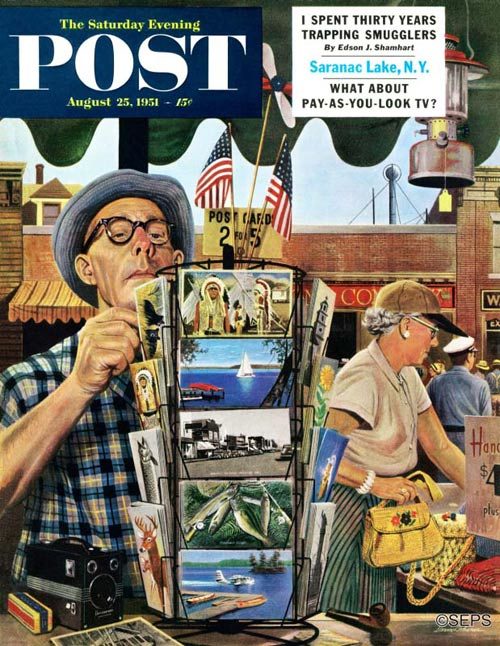
Stevan Dohanos
August 25, 1951
What I love about this Stevan Dohanos cover is that it takes something rather mundane — buying postcards during a summer vacation — and makes it rather beautiful.
End of Summer Recipes
Sure, I can call this section “End of Summer Recipes,” but it’s hard to do that when I’m sitting here in 90-degree temps and dew points in the 60s. Just as I finished that sentence, the power went out for a few seconds. Now I’m typing this knowing it’s not going to be saved until my internet comes back. This is the second time the power has gone out today. Funny, I can go through an entire winter of storms, with wet snow and ice and intense winds and not have one power outage, but when it’s really hot, I can get two in one morning.
But Labor Day marks the official (or is that unofficial?) end of the summer season, and here are some recipes to try this weekend. How about these Sweet Hawaiian Mini Burgers or this German Potato Salad, which uses mustard instead of mayonnaise, so millennials will like it? For a refreshing drink, you can try this Vintage Lemonade, and for dessert this cold Hershey’s Chocolate Milkshake.
Now if you’ll excuse me, I have to go turn my fan back on.
Next Week’s Holidays and Events
V-J Day (September 2)
This marks the day that Japan surrendered to the Allies during World War II. It can be a confusing holiday because “V-J Day” can be a reference to the day that Japan’s surrender was announced (August 14 or 15 in the UK and other places, depending on your time zone) and September 2 in the US, which is the day that Japan officially signed the surrender papers.
Labor Day (September 3)
Here’s a gallery of Post covers that show how labor and the workforce have changed over the decades.
Read a Book Day (September 6)
Come on. You should read a book every day!
Cartoons: The Funny Thing About Marriage…
In the wise words of Ben Franklin, “Keep your eyes wide open before marriage, half shut afterwards.”
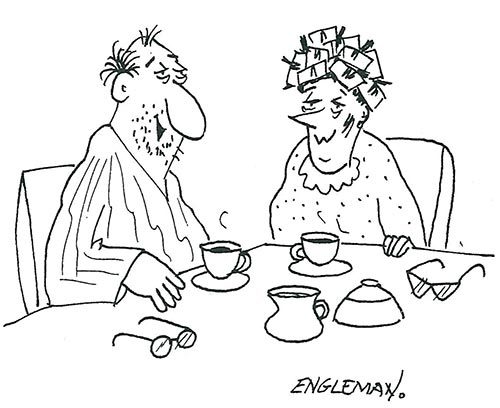
Mar/Apr 1999
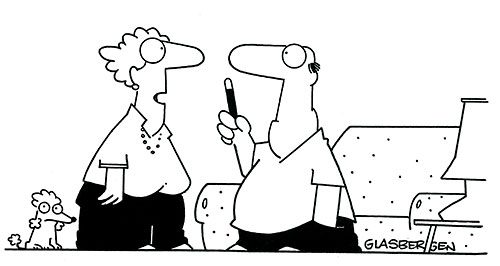
Jul/Aug 1998

Mar/Apr 2003
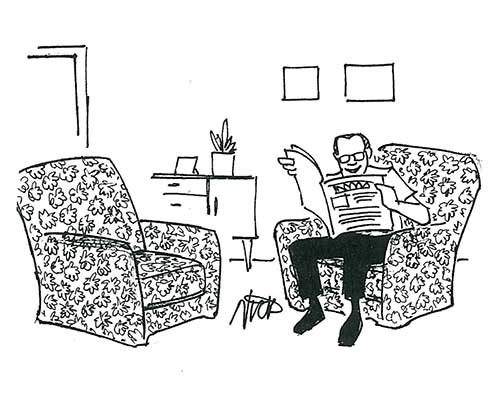
Jan/Feb 2007
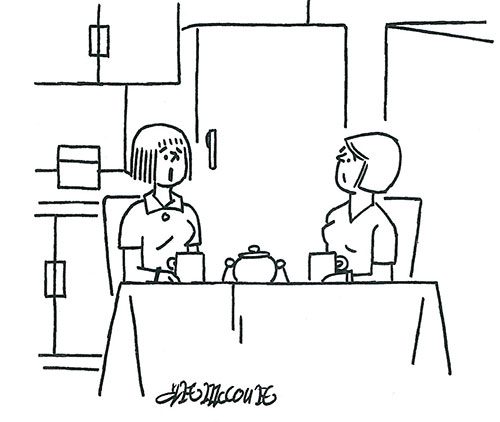
Jan/Feb 1998
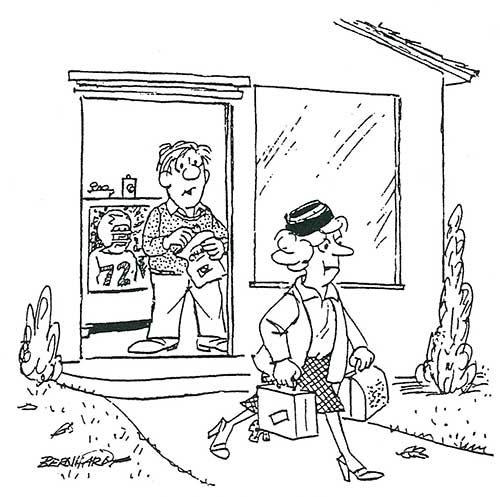
Jan/Feb 2002
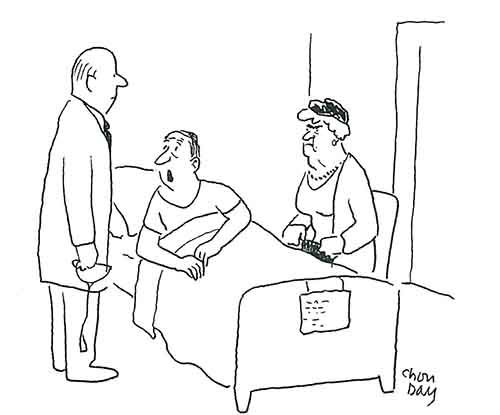
May/Jun 2000
Seriously Good Fall Films
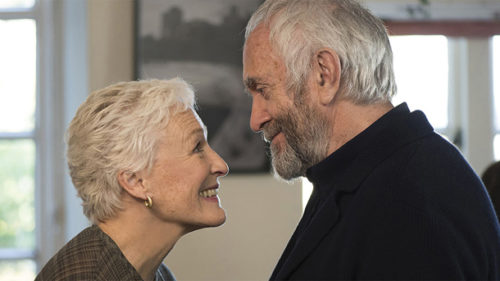
The Wife (August 17)
Fans of great screen acting can’t ask for more than Glenn Close and Jonathan Pryce as a long-married literary couple whose lifetime of shared secrets catches up with them on the night the hubby accepts the Nobel Prize for Literature. Based on Meg Wolitzer’s novel, the film explores how even mutually agreed marital ground rules can mess up life’s later chapters. Christian Slater pops up as a biographer who lives to turn over stones in his subjects’ lives. And look for Close’s daughter, Annie Stark, as the younger version of her mom’s character.
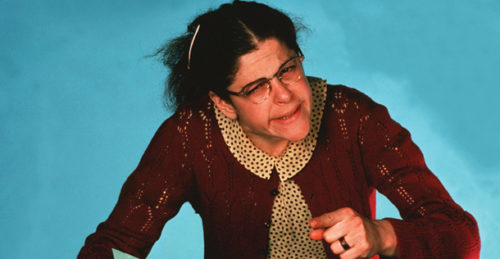
Love, Gilda (September 21)
The life story of Saturday Night Live star Gilda Radner will make you laugh and cry — often at the same time. You’ll laugh because Gilda was one of the funniest people who ever lived, and the film’s generous helping of clips includes the best of her best, from characters like crass Roseanne Roseannadana to Gilda just being herself, charming her audiences into happy submission. You’ll cry because the film follows Gilda into the depths of her battle with cancer, including heart-rending moments in the hospital. Director Lisa Dapolito smartly lets Gilda do all the talking, using rare recordings the comedian made while working on her autobiography. The world could use Gilda now; this movie makes us miss her more than ever.

What They Had (October 19)
It’s a sign of the times that many of our most captivating films deal with Alzheimer’s, the scourge of a generation. What They Had is among the best of them, exploring not just what it means to care for someone with dementia, but also what it means to keep loving them for who they are. Blythe Danner is masterful as the mom who is slipping away but clings to the remnants of her good humor like a life preserver. As her overwhelmed family, Michael Shannon is the endearingly gruff son, Hillary Swank the daughter who parachutes in when things get tough, and Robert Forster the heartbreakingly devout but ultimately overmatched husband.
This article is an expanded version of the interview that appears in the September/October 2018 issue of The Saturday Evening Post. Subscribe to the magazine for more art, inspiring stories, fiction, humor, and features from our archives.
In a Word: Why All Automobiles Are Hybrids
Managing editor and logophile Andy Hollandbeck reveals the sometimes surprising roots of common English words and phrases. Remember: Etymology tells us where a word comes from, but not what it means today.
If the language purists of old had their way, automobiles wouldn’t exist.
The prefix auto- comes from the Greek autos “self,” but the -mobile part comes from Latin mobilis “moveable.” In linguistics, words like this that originate in two or more languages are called hybrid words. More colloquially, they are sometimes called Frankenwords (after the patchwork assemblage of Frankenstein’s monster), and you probably use them every day without knowing it: bureaucracy, gullible, pacifist, sociology, speedometer, and television are all Greek and Latinate hybrids. Starvation and courthouse both mix Latin and Germanic roots.
Hybridizations are really nothing special these days. But, writes fellow language columnist Jan Freeman, “to the language watchdogs of the 18th and 19th centuries, trying to hold back the tide of innovation, it was a big deal — or, at least, one convenient weapon for smacking upstart coinages.” These mavens labeled such hybrid words “barbarisms” — except, of course, the ones they found useful, like drinkable and goddess.
Such snoots would have had us driving around in either Greek autokinetikons or Latinate ipsomobiles.
Thankfully, these days hybridization is widely recognized as just another way that a language grows naturally and democratically.
Has the American Work Ethic Gotten Worse?
“It’s easy to see that America has lost sight of the virtues that comprise work ethic — the very things that helped build our country,” wrote David Schwabel in Forbes magazine.
It’s a common complaint among Americans. You hear it when we get lousy service in a restaurant, find our new appliance doesn’t work when they get it home, or spend hours on the telephone to speak to a customer service representative who can’t or won’t help us.
Have Americans lost their willingness to apply their noses to the grindstone, or to work hard for anything they get in life? That’s not what statistics show.
Right now, the average American works 34.2 hours a week, according to 2018 Organization of Economic Cooperation and Development statistics. But this is an average that counts part-time workers.
Adult Americans with full-time jobs work, on average, 47 hours a week — 90 minutes more than they worked a decade earlier, according to a 2014 Gallup poll.
We annually put in more hours, on average, than workers of most industrial nations:70 hours more than Japanese workers, 99 more than British laborers, and 424 more hours than Germans, according to that OECD study.
In fact, European workers find it funny that we work from home, respond to work emails and phone calls after hours, eat lunch at their desks or skip lunch altogether, and refuse to take paid vacation or sick leave.
We rack up this impressive number of hours because we still believe in the virtue of work. A 2012 Pew Research Center survey shows 75% of American workers still believe most people can succeed if they work hard — far more than workers in other countries. (Only 57% of British workers and 35% of Russians believe it.)
Perhaps this is why Americans are reluctant to excuse people from their jobs. All 40 of the leading industrialized nations provide some form parental leave for new parents, except the U.S.
America does not count itself among the more than 130 countries have set a maximum length of the work week, and we have no federal law requiring paid sick days or mandatory annual leave. Finally, American workers average 13 vacation days per year, whereas most western nations get 20.
Yet Americans remain highly productive. As measured by average contribution to the Gross Domestic Product, American workers produce, on average, $60.59 of goods and services every hour, the third highest rate among 20 leading nations, according to a 2011 report from the Bureau of Labor Statistics.
This is consistent with a tradition reaching back for generations. While new technology has greatly improved America’s productivity, our workers have also played a part by continually adjusting to changing job expectations and mastering new skills. As a result, productivity in the U.S. has risen 115% since 1950.
So if we’re still productive and still putting in the long hours, why do we feel that our work ethic is slipping?
It may have to do with the changing nature of American work. The majority of hiring is taking place in the service industry where wages are low and chances for advancement are few. Knowledge-based jobs, like computer programming, pay better but often require costly college degrees. Since 1988, the cost of a four-year degree at a public college has risen 213%, and student loan debt has more than doubled in the last decade, reaching an astronomical $1.3 trillion in 2016.
Meanwhile, wages have remained virtually unchanged. In 1964, the average hourly wage in America was $2.50. In 2014, it was $19.18 — an impressive difference until you adjust those numbers for inflation. Then the numbers show American workers are only earning $1.49/hour more than they did 40 years earlier.
In addition to hours worked, company loyalty has also been seen as a marker of a strong work ethic. But employee loyalty has eroded as companies have downsized their work force while some high-level CEOs are receiving multi-million dollar perks as part of their employment or separation package. Meanwhile, companies are cutting workers’ benefits or raising their insurance costs beyond affordability.
But What about Millennials?
The criticism of American workers has been even stronger when describing Millennials (generally considered those born between 1981 and 1996). Business owners claim they are hard to manage, and don’t apply themselves to the job.
But here, again, the statistics about their work habits and aspirations are contradictory.
For example, a 2010 Pew Research Center survey asked over 2,000 workers in the Silent Generation (pre-WWII), Baby Boom, Gen X, and Millennial age groups what was most important in their lives. Most Millennials (52%) replied “being a good parent.” “Having a high-paying career” fell in sixth place (15%). When asked what qualities distinguish their generation, Millennials were the only generation that didn’t include “work ethic” in their list.
Two other surveys, though, gave a different picture of Millennials. A study of 5,641 full-time workers in the Baby-Boom, Gen X, and Millennial generations who had jobs with paid time off found Millennials worried most about taking time off and being replaced. More Millennials (48%) wanted to be viewed as “work martyrs” than Gen Xers (39%) or Baby Boomers (32%). They were also more likely (25%) to leave paid vacation days unused at the end of the year that Gen Xers (19%) and Boomers (17%). Another survey at Alamo Rent A Car reported Millennials were much more likely (59%) to feel ashamed for taking or planning a vacation than workers 35 years or older (41%).
Over half of Millennials say they’re willing to “pay their dues.” (But 70% of older workers say that Millennials aren’t as willing as they should be.)
Do Millennials deserve their reputation of spoiled, lazy, immature workers? A study of four generations of workers, taken from 77 different studies, showed no difference in the industriousness between the generations.
So what will the future of the American workplace and Americans’ industry look like 10, 20 or even 100 years from now? Will we all be working 80-hour weeks in a series of strung-together part-time gig economy jobs, or will we find ourselves in a work-free heaven (or is it hell?) being served drinks by our robot butlers (or is it overlords)? All we do know is that when it comes to planning our future, there’s a lot of work to be done.
Featured image: Shutterstock
Cartoons: Back to School
It’s back-to-school time, and we’ll all need a sense of humor to get through it!
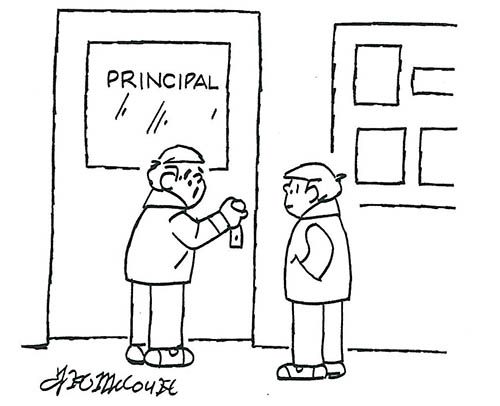
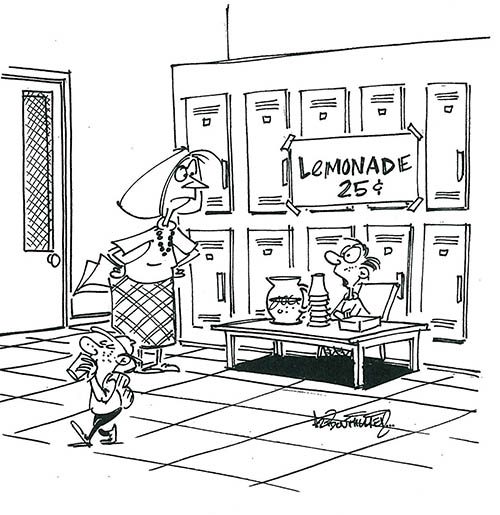
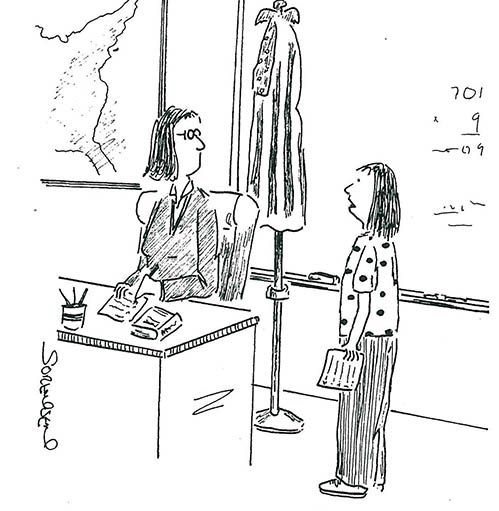
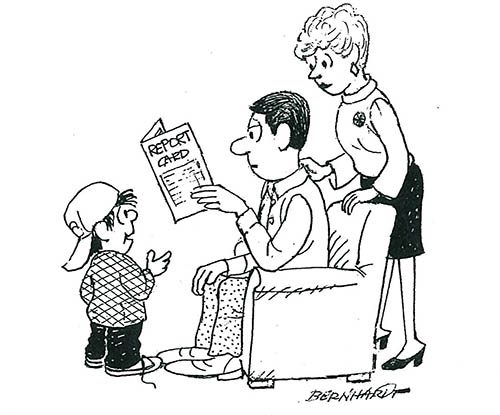
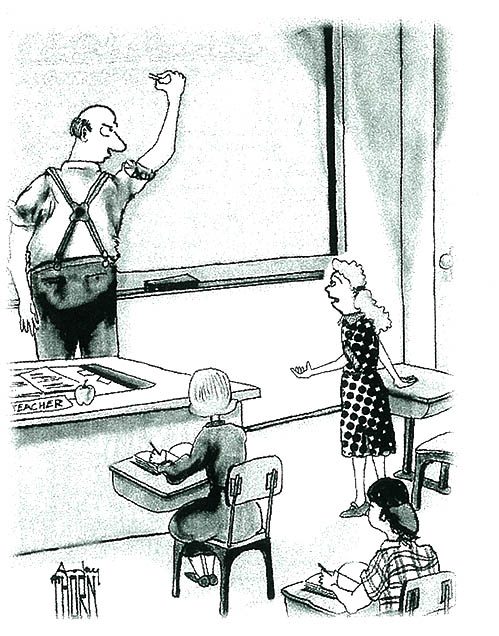
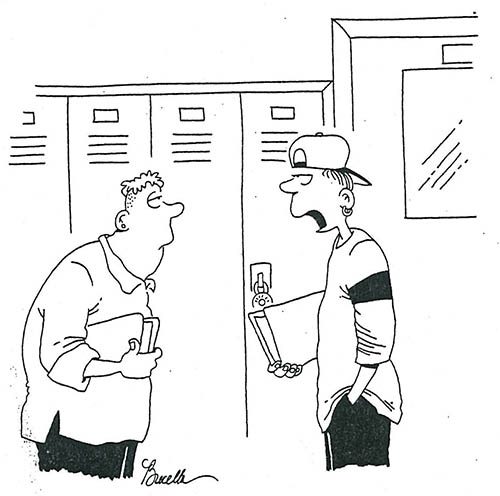
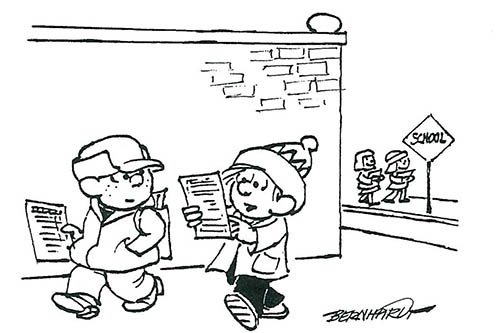


“The Nesting Instinct” by D.K. Findlay
Summer is for steamy romance. Our new series of classic fiction from the 1940s and ‘50s features sexy intrigue from the archives for all of your beach reading needs. In “The Nesting Instinct,” from 1959, Pete will try anything to show his long-time neighbor Winona that he’s interested.
The Kuylers lived next door to the Millers. Pete Kuyler dropped in on the Millers after dinner as he usually did.
‘‘Hello, Pete,” said Mrs. Miller. “Just in time for coffee.”
‘‘Hello, Pete,” said Mr. Miller, looking up from his book. “Here’s an interesting bit; I’ll read it to you.”
“Now, father,” said Mrs. Miller. Mr. Miller was always reading bits out of books to anyone who would listen.
“Is Winona around?” asked Pete.
“She’ll be down in a minute.”
Winona came in, eating an apple and reading a book on higher mathematics. “Hello, Pete,” she said. She read them a bit from her book — it was a family failing; something about the number of uncompensated errors being equal to the square root of something.
“Pretty neat, eh?”
When it came to brains, Winona sparkled like a crystal.
“How about a movie?” said Pete.
“Thanks, but tonight I wash my hair. Why don’t you ask Eva Pullaski?”
“Because I don’t want Eva Pullaski.”
“She has a very interesting walk.” She swayed across the room in the sexy manner of Eva Pullaski, ending with a derisive flip of her derrière. “Well, I’m off to the suds.”
And she went off to wash her hair just as if Pete were calling on her mother and father and not on her. And that was the crux of the problem.
In a world full of curvy girls willing to be led to the altar, Pete persisted in being in love with Winona, a library-type girl with a figure like a beanpole, who had no plans for being led to the altar. To her, Pete was just the boy next door, whom she had known for ages. Besides the said skinny figure, she had a head of wheat-straw gold and a cool pleasant smell like a verbena.
But no yen for the men. What Winona liked was reading difficult books and eating apples. So far, she had not met a man as interesting as a good book, or even a good apple.
This was frustrating to her mother, who was solidly pro-Pete. She had known him all his life; he had a promising future in the business which his family owned. And besides, Mrs. Miller was a cheery, sociable soul, who liked weddings. That is, she liked weddings where nice boys like Pete got nice girls like Winona. Sometimes she was afraid Winona would not catch on until it was too late.
For it was clear that Pete was becoming discouraged. No one could say that he had not tried. He had done the flowers-and-candy bit for years; he had plodded through the World’s Best Books because Winona spoke highly of them, and he had bought a red sports car to dazzle her. But that was a device that had backfired. It had not dazzled Winona, but it had caused Eva Pullaski, a curvy girl who lived down the street, to pay Pete a great deal of warm attention.
Pete prepared to take himself off.
“Well, there goes the evening. I guess I’ll have to fall back on Plan B. Plan B is where the operative cuts his throat.”
“There are days when I could shake her,” said Mrs. Miller.
“Here’s an interesting bit,” said Mr. Miller. “It’s about bowerbirds, which are native to Australia and New Guinea, and are related to birds of paradise. Listen to what they do in the spring.” He read aloud from the book: “‘In the springtime, in order to attract a mate, the male bird builds a bower arched over with twigs, leaves and grass. Some of these are small and tent-like while others are long runways with a height of two or three feet. Outside the bower, the bird clears a space for a garden, a lawn of green moss, and decorates it with berries, colored stones, feathers, leaves and bright flowers — ’”
“Hey!” said Pete. He sat up. “Say!” Then he said, “Good night, all,” and vanished.
“Now what?” asked Mr. Miller, surprised by the suddenness of his going.
“He certainly went out of here under a full head of steam,” said Mrs. Miller.
Pete dropped in on the Millers the following evening. That is, he burst in like a human exclamation point.
“Guess what! I’m going to build a house!”
“Why, that’s splendid!” said Mrs. Miller. “Do you hear that, Winona? Pete is going to build a house.”
Winona looked up from her book. “A what?”
“A house! I’ve bought a lot at Heatherley Heights.”
“Pretty expensive out there?” asked Mr. Miller.
“Oh, brother! But it’s worth it. Say, I never knew about houses before. I didn’t know they could be so interesting.”
“Useful, too,” said Mr. Miller. “If it weren’t for houses, where would we put the mortgage?”
Winona was looking at Pete with interest. “Does this mean that you and Eva Pullaski — ”
Pete exploded like a firecracker. “Will you stop making cracks about Eva Pullaski and me! Eva Pullaski is nothing to me; I wouldn’t give her the time of day! Listen, Winona, this house is going to be terrific — fabulous! I’ve been up all night studying plans. It’s going to be a split- level on a well-treed lot.”
“Does that mean the trees are on the lot, or the lot is up in the trees?”
“All right, all right; have your fun. But just you wait — you wait right there — you’ll see!”
Often during the next weeks Winona looked about the room with the air of one who misses a familiar article of furniture.
“What’s happened to Pete these days?”
“He’s building a house. He told you about it,” said her mother.
“Sure enough, he did.” She thought about it for a moment. “Whatever does he want a house for?”
“To live in, I suppose. He’ll be getting married one of these days. Even if he doesn’t live in it, property out there is a good investment.”
Not only was Pete busy building, he was doing some pretty deep thinking. It seemed to him that he had got to the bottom of one of life’s mysteries. He mentioned the matter to Mr. Miller.
“Do you ever wonder why they have all these June weddings?”
“Beats me,” said Mr. Miller.
“It’s a sort of urge like the nesting season in birds. Come the spring, the girl looks round and if she finds a likely-looking nest, that’s half the battle. All these new houses are supposed to be ready in May, but they never are, so they have to hold off until June.”
“Only one thing wrong with your theory,” said Mr. Miller. “The girls get married not only in June but in January, February, March, April, May, July, August, September, October, November and December.”
“There is a tide in the affairs of men which, taken at the flood, leads on to fortune.” In other words, if you have a good scheme going for you, the thing to do is to wait for the propitious moment. Especially is this true of the building trades and houses under construction. But did Pete wait patiently for a favorable moment? Not he.
He came banging at the Miller door one raw, wet, windy March day, urging them to come out and inspect his dream house. It was no day to inspect anything, said Mr. Miller, who was lying on the sofa, it was a day not fit for man or beast. Winona toasting before the fire with a good book felt the same way.
But Mrs. Miller was loyal. “On your feet, everyone. Get your galoshes.”
They were bundled into Pete’s open car and sent hurtling through the wild wet March weather. They stopped before a drowned hillside where someone had built a foundation and stuck in a lot of two-by-fours.
“There she is,” said Pete proudly, seeing it not as it was, but as it would look when finished.
“You’ve been gypped,” said Winona. “Let’s go home.”
“We’ll come back when the flood waters have subsided,” said Mr. Miller.
“Now, father,” said Mrs. Miller.
Pete, bubbling with enthusiasm, showed them over every foot of it, over loose boards and piles of brick.
“Now this is the living room. That big hole over there is where the fireplace will be and this hole here is for the air conditioner. Underneath is the recreation room. Of course it’ll look different when the furniture is in.”
“Sure hope so,” said Mr. Miller morosely. “Right now it’s furnished with three feet of mud.”
“Notice this trench outside?”
“What do you mean, notice it?” said Winona. “It looks like Lake Erie.”
“That’s the drainage ditch. We’re going to put in weeping tile so the basement will always be dry…. Hey!”
Winona had stepped on the end of a loose plank which reared up like a teeter- totter and dropped her overboard. They got her out, minus one shoe.
Altogether it was a pretty dismal afternoon.
Pete was a going concern these days, he was really humming. He was finding that there is nothing so interesting, absorbing, rewarding and surprising as building a house. He sat up late thinking up ways to make this house better. This split-level was to be a split-level fit for a queen. A queen by the name of Her Majesty Winona Miller.
The dream house began to look like a house. The roof was on. The plumbers and plasterers were in and out, followed by the painters. It was nearly complete.
There came a fine evening in early June. There was spring in the air. There were boys and girls together wherever you looked, slightly bemused.
“Come out to Heatherley Heights,” said Pete to Winona.
“Don’t mention that place around here. Father said it gave him the worst cold he ever had.”
“The mud is all dried up. Come on, Winona; I have a surprise for you.”
They drove out to Heatherley Heights. A handsome split-level house with its windows shining sat on its immaculate greensward. Winona was astonished. She was learning one of life’s lessons for young girls, which is, you take a lot of men in overalls and set them messing about with boards and bricks and plaster and you’d be surprised at what comes out. She walked through the pastel-colored bedrooms, the dining room with the glass wall to show off the dishes, the kitchen with red brick and white plaster.
“It’s lovely. Pete; it’s really lovely.”
“I built it for you.”
“Me!”
“I’m not very good at telling you how I feel about you. I’m trying to tell you with this.”
The house was a very eloquent pleader. After this, she could no longer pretend not to know the strength of his feeling for her.
“I don’t know what to say, Pete.”
“‘Yes’ would be nice.”
“That’s the tough part. I like you better than any boy I know — but it’s not one of those deals with fireworks.” She looked around. “I rather wish it was.”
Eva Pullaski met Pete on the street. “I hear your new house is a knockout.”
“It’s all right, I guess.”
“How about showing me over it?”
“Sure, be glad to. Sometime.”
“Sometime about 8 o’clock tonight.”
That evening Winona had happened to bring home a novel of unrequited love. It was about this young fellow who loved this girl who did not return his affection, and about his sufferings, which were excruciating. It shook Winona; even though she was not in love with him, she did not want Pete to suffer on a scale like that. On impulse she called him on the phone; he was out at Heatherley Heights, his mother said, at the new house.
Winona hopped into her car and drove out.
In the split-level, Pete was explaining the different systems of heating a house — coal, oil, gas, hot water, hot air, electricity — to Eva Pullaski, who did not care much one way or the other. What Eva liked was boys, and she had been alone with this one for an hour and nothing had happened. Evidently he needed stirring. “What’s with the main burner, lover boy?”
“Huh?”
She sidled warmly against him. Naturally he kissed her. And naturally, just at that moment Winona walked in the door.
“Aha!” she said and walked out again.
Next evening Pete rang the Miller doorbell.
“This is the Miller residence,” said Winona inside the screen door. “Your bowerbird lives down the street.”
“Aw, come on, Winona. You know it didn’t mean a thing. I was just explaining about heating systems.”
“Yes, I could see that.”
“You could see other things too,” said Pete, nettled, “if you weren’t an ice-coated beanpole!”
“Is that so?”
“Yes, that’s so!”
“If you are looking for father and mother, they’re in the living room.” She opened the door and, when he came in, she stepped out and closed it.
This was a tactical error, she realized a moment later; he was inside and she was out. She had not planned to go out, but having made a gesture, dignity demanded that she stay out. She went for a walk.
Several days later, Winona happened to glance out the back door into the Kuyler yard.
“What’s the matter with Pete?” she asked her mother. “He’s sitting out there looking as if he hadn’t a friend in the world.”
“His mother says he mopes round the house. Won’t eat a thing.”
“I’ll go out and cheer him up.”
She went out into the back yard and threw an apple core at him. “What’s the matter—have you got the blight or something?”
“I’m sorry I called you an ice-coated beanpole.”
“Oh, that? Sure I’m a beanpole. Figure like a thermometer. Mother says I’ll fill out someday, but not much sign yet. How are things out at the new house?”
“I sold it.”
“What!”
“This fellow offered me two thousand dollars more than it cost me, and Eva Pullaski advised me to take it.”
She recoiled from him as if he had taken leave of his senses. “That is absolutely the dumbest thing I ever heard of! You build this beautiful house and then you go and sell it on the advice of a bird brain like Eva Pullaski. Listen, any time Eva Pullaski knows enough to come in out of the rain, that’s a brain wave.”
“But l thought you didn’t care about the house — “
“But you do! Why did you go and sell it when you personally love every board and brick in it? Men!” cried Winona. “Holy mackerel!”
She went into the house pretty indignant.
Pete came over to the Miller house.
“Nobody home but me,” said Mr. Miller. “Winona and her mother have gone to the movies.”
“I know. It’s you I came to see. I was hoping you’d give me some advice.”
“Glad to. On any particular topic, or just in general?”
“About Winona.”
“I was afraid of that. Fathers are remarkably poor sources of advice re their daughters. The general opinion is that when it comes to daughters, fathers don’t know beans.”
“I’m getting pretty desperate. A few days ago when she got mad at me for selling the house, I thought I was making progress. But when I told her I’d got it back again she just said good, that’s the stuff, as if it was nothing to her.”
“There’s something stirring in Winona,” said Mr. Miller. “I can tell by the books she brings home from the library. Up till now, it was usually deep stuff, pretty rough going for me. Like that time she took up the quantum theory, my mind was stretched like a rubber band, I figured it was due to snap any time. But look at this week’s haul—two love stories and a book on interior decoration. Last week she even brought home a cookbook. Winona, I think, is a good deal like her mother.”
“Yeah, I guess so.” Pete did not see that this was much help.
“Let me tell you about the summer we got engaged. She was a college graduate, she was a darb at the books, she thought she’d like to go back and take her M.A. Whereas I wanted her to stay home and take an A.M. — that’s me.”
“What happened?”
“Don’t hurry me, boy. I was in quite a state that summer; I tried everything I could think of. I even stopped a runaway horse.”
“A horse? I wonder where I — ”
“Nevermind. Horses are out. It didn’t do me any good; it just ruined a good suit.”
“What did it?”
“Something that had nothing to do with me at all. You know, when the girls are standing on one foot, trying to make a decision between marriage and a career, something not very large or important can tip the scales one way or the other. It seems to be the timing that does it.”
“What happened?”
“An old aunt of hers died and left her a silver tea service which she had always admired. It seemed to turn her thoughts to a home and settling down. She always denies this, but I used to say that if it weren’t for that silver tea service the world would have got another M.A. and I would have lost a missus.”
“Has Winona got any old aunts?”
“Two. Both, I am glad to say, in excellent health. … I think I hear the girls coming now.”
Winona and her mother came in. Mrs. Miller greeted Pete. “For goodness’ sake, calm down,” she said to Winona. Winona’s eyes were bright, she seemed to be walking on air. “She’s in a flat spin,” said her mother.
“What happened?” asked Pete.
Winona, who had sat down, sprang up again. “Wait till you hear!”
“We’re waiting.”
“You’ll never believe it!”
“Well, give us a chance to try.”
“And to think I nearly didn’t keep my ticket; the man at the door had to run after me with it. And when they called out my name over the loud-speaker, I just died!” She fell into another chair and died again.
Mr. Miller looked at his wife. “Kindly issue a communiqué.”
“She won a set of dishes at the Lyric. Very nice ones too.”
“Ninety-six pieces!” cried Winona. “Eight dinner plates, eight bread-and- butter dishes, eight soup bowls, eight dessert dishes, eight cups and saucers, one soup tureen, three platters, one gravy boat, two creams-and-sugars — “
“Yes, dear, we know,” said her mother.
“Pete, it was terrific! It’s the first time in my life that I ever won anything. There I was sitting there, not even paying attention — “
She told it all over again, with details. Some time later when Pete got up to go home, she was surprised.
“So early?”
“It’s midnight,” said her mother.
“Oh. Well, I’ll walk you to the gate, Pete.”
She saw him safely down the porch steps. In the most natural way she put her hand within his arm. At the end of the walk she lingered for a moment.
“See you tomorrow night, Pete?”
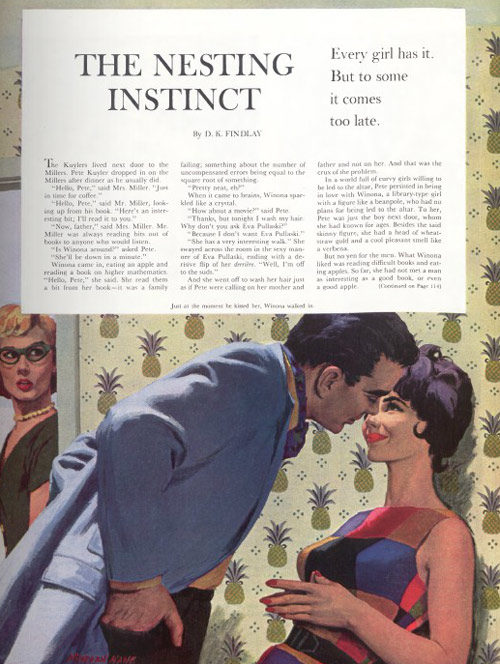
North Country Girl: Chapter 67 — The Best Job in the World
For more about Gay Haubner’s life in the North Country, read the other chapters in her serialized memoir.
Some names have been changed.
As editorial assistant at Penthouse magazine, my duties were editing the vile Letters section, a daily dose of saltpeter to my own sex life (a task I finally ditched on someone else), and taking my boss out to three-martini lunches (slugging back a few glasses of life-and-sanity-saving white wine myself).
Now that I was sprung from my smutty epistolary prison, the question was what I would do for those six hours a day I was not at lunch.
I was sent off to talk to Paul Bresnick, who had the competing titles of fiction and service editor.
Paul had literary taste of the first water backed by the deep pockets of Penthouse, which let him purchase stories and book excerpts by Gore Vidal, Philip Roth, James Baldwin, Paul Theroux, and other high flyers.
By rights a fiction editor who worked with five-star authors should be above dealing with humdrum service articles. Service supposedly meant consumer services, as if we were doing the readers a favor by running reviews of cars, motorcycles, electronics, and cameras. In reality the service we provided was for the advertisers, plugging their products in glowing terms. It didn’t matter if what you produced was a lemon; purchase a full-page ad in Penthouse and your Isuzu or Yugo would be written about and photographed as lovingly as if it were a Pet of the Month.
Paul was as eager to dump his unwanted editorial task as I had been.
“I’m flying to London tomorrow to meet with J.P. Donleavy and I’m stuck editing an article on radar detectors,” he groused.
My short stint at Viva had been all about coming up with punning headlines and appeasing advertisers. I was the woman for the job of service editor. I just couldn’t believe Paul would willingly give up such a plum, especially to someone who could barely drive a car, had no idea how a stereo worked, and had trouble focusing a camera. Despite my shortcomings, I was bequeathed the lofty title of service editor of Penthouse magazine, the best job in the world.
My favorite perks of this new gig were free meals at lavish press parties, thrown by PR agencies that seemed to be wallowing in money. In 1980 it was après moi le deluge for the automotive industry; a company couldn’t bring out as much as a new spark plug without a press conference, always held at a suitably masculine restaurant with plenty to eat and drink to sweeten their spiel.
A short-lived competitor to STP took over the top floor of the 21 Club to hype their doomed product to the car press, which was 99.9% male and then me. In between the mountainous wedge of iceberg lettuce topped with a glacier of blue cheese dressing and the Flintstone-sized T-bone, we were served a palate-cleansing consommé. The already drunken Car & Driver editor next to me nudged me in the side with his elbow and asked “Is your soup empty too?”
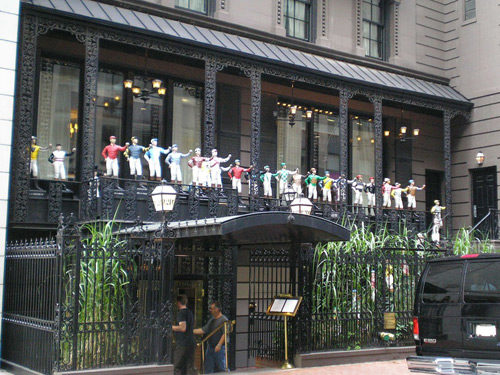
There were also invitations to test drive cars, sometimes at day-long events out of the city and sometimes really out of the city, at bashes thrown at the Greenbrier or in Palm Desert, all expenses paid. These invitations I was required to turn over to my boss, Jim Goode, the executive editor. I didn’t mind; I knew that if I were plopped behind the wheel of a souped-up car with a helmet smashed on my head I would immediately drive into a ditch.
Instead of being greeted every morning with a bag of dirty letters, I now found on my desk packages addressed to “Service Editor, Penthouse:” bottles of booze, walkie talkies, cameras and lenses, turntables and speakers and pre-amps, and yes, a Fuzzbuster radar detector, which I turned over to Jim Goode so he could speed his pups out to Shelter Island in his Lincoln Continental without being pulled over by the man. For the new service editor of the best-selling men’s magazine in the world, every day was Christmas.
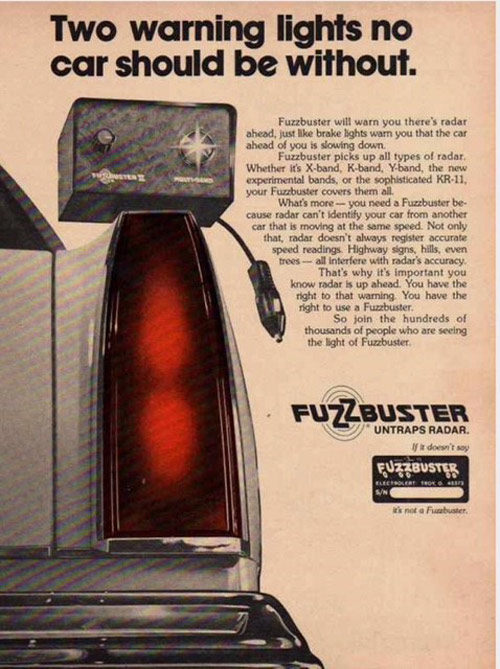
Besides all the free stuff and never having to pay for a meal I could now parcel out gold-bricking service articles to my writer friends, which meant I could take them out to one lunch to give them the assignment (five minutes spent listing the companies the ad staff was pitching or pacifying, an hour and fifty-five minutes getting drunk), another follow-up lunch to go over edits (what the ad department wanted changed, then getting drunk), and cut them a nice check.
My old pal Michael VerMeulen, now relocated to New York, on his way to London and an early death, became the Penthouse liquor writer and the main beneficiary of my splurgey expense account lunches.
One day VerMeulen dropped by to pick up his money for nothing. I fetched his check and was walking him out of the office when we passed another Penthouse editor. VerMeulen’s head swiveled 180 degrees and he smashed into a wall.
“Who was that?” he gasped.
That was Zelda Fleming, our femme fatale and least-likely Penthouse editor even among our staff of misfit toys. Zelda came from a patrician New England family, had attended Miss Porter’s School for Girls, and dressed in the upper-crusty style Ralph Lauren stole.

Zelda’s purview was the Penthouse Profile. Playboy had their famous Interview; because Penthouse had to be almost but not quite like Playboy, instead of Q&As we published celebrity profiles, which ranged from Marty Feldman to L. Ron Hubbard to the Ayatollah Khomeini to Robert Redford, whomever a writer could lasso into the magazine.
She was rail-thin, with big eyes and a doll face and an uncanny effect on guys: they wanted to protect Zelda from all the other rapacious men while ravishing her themselves. The only man I knew who was immune to her charms was my own boyfriend, Michael, who said to me those words every woman longs to hear: “She’s too skinny.”
Zelda merely had to waft by for VerMeulen to be smitten.
“I know someone who knows Bob Fosse. He’d make a great Penthouse profile,” pitched VerMeulen, straining his neck for another glimpse of the Lorelei who had captured his heart.
I had my doubts whether the Penthouse reader would be interested in a Broadway choreographer, no matter how famous or heterosexual, but ignored all my misgivings and wrangled a meeting for VerMeulen with Zelda.
Even though Zelda turned down his profile idea, VerMeulen came back to my little editorial pit with gaga hearts throbbing in his eyes. “I’m leaving my wife. I’m in love with Zelda,” he announced, as seriously as if he were discussing his next meal.
I marched VerMeulen over to the closest bar, P.J. Clarke’s, bought him a large drink, and gave him an earful of the Legends of Zelda, apocryphal gossip that we swapped gleefully about the Penthouse office. It was like a risqué game of Telephone; by the time a salacious Zelda story came back to me, the details were even more outlandish.
Among Zelda’s alleged suitors were:
- A Mafia capo, who enjoyed hanging her by the wrists and stubbing cigarettes out on her body.
- A European diplomat who bought her a wardrobe of handmade Belgian shoes and got his kicks by removing one pair of thousand dollar flats from her long, narrow feet and lovingly replacing it with another.
- My personal favorite, a television executive, the famed producer of 1960s game shows featuring celebrity panels. According to legend, in order to talk to his beloved the TV executive insisted on dragging his wife’s Pekinese out for an unwanted walk every evening at nine so he could duck into a street corner phone booth until one steamy conversation with Zelda proved to be too much for his dicky heart.
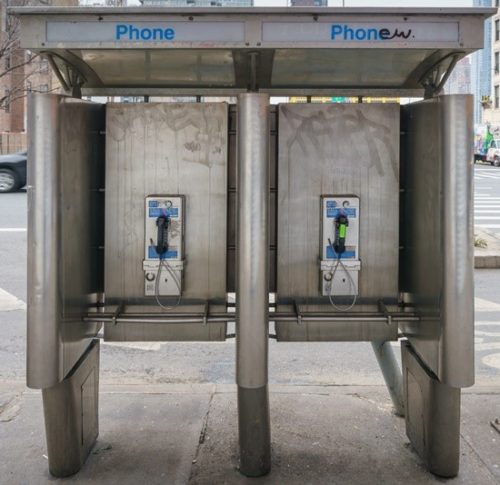
None of this dowsed VerMeulen’s ardor; from then on I never allowed him back in the office, always claiming that I had already popped his check in the mail.
When pressed for the facts, Zelda always laughed off every racy rumor; I was tempted to push up the sleeve of her cashmere twin set and check for cigarette burns. She wasn’t unaware of her power over men, but she didn’t consciously turn it off and on; it was magic, a gift from her own good fairy.
I was gleefully tearing open a day’s offerings to the service editor — an underwater camera! A bottle of Bacardi rum! An electric wok from some PR company who was not doing its research! — when Zelda’s tiny head popped over the side of my slanted cubicle. I hoped Zelda wouldn’t lean on the partition as her ninety-five pounds was enough to topple it.
“Hi Gay. Are you busy?”
I had unwrapped all my goodies. “Ah, no, what’s going on?”
Zelda glanced behind her and then scooted in to stand by my desk; I couldn’t offer her a seat as there was barely room for my own chair amid my towers of consumer loot.
“I have a huge favor to ask you. You know I share an office with Annie.”
That would be Annie O’Hare, the associate editor and the other fake Penthouse Pet besides me on the Watkins Glen junket of disaster.
“Could you switch offices with me?” if by office Zelda meant the two flimsy fabric-covered boards precariously perched around my desk.
“I can’t take her anymore. Her papers are all over the whole office, she never throws anything away or even files it. She is on the phone from the minute she comes in. I have to hear every detail of the bars and parties she was at the night before seven times a day! When she’s not on the phone she’s complaining and when she’s not complaining she’s smoking. Actually she smokes and complains at the same time.”
If I had been a man, Zelda would have had me at “Could you?” But I was suspicious. Zelda had an office — with a door! — and her desk faced a window, a window with an uninspiring view of Midtown but still a window, with daylight and weather. How horrible must Annie be if Zelda were willing to move into my doorless, windowless hovel at the back of the secretarial pool?
“Let me think about it,” I said.
I consulted with my pal, Senior Editor Peter Bloch, to see how bad the Trojan was in this gift horse. He shrugged. “I adore Annie, she’s smart and funny, but I don’t have to share an office with her. She can be…difficult.”
Difficult was okay, considering that even squirreled away in my back cubicle I was within earshot of Annie’s daily tirades, screeds that reverberated around the office, curse words echoing through the hallways. I could put up with difficult.
And I was still the newbie, grateful that Penthouse had rescued my fired ass and bestowed on me the best job ever. I would have taken my chances with Squeaky Fromme as an officemate to stay in the good graces of the other editors.
Under cover of darkness (5:05 pm when everyone else was already at the bar), Zelda and I switched offices.
At ten the next morning I was hunched over page proofs, my back to the door of my new office, when I felt a displacement of air and caught a whiff of menthol cigarette smoke. I swiveled, unable to hide my guilty expression as I realized Zelda or I should have said something to Annie; I couldn’t have been a pleasant surprise.
“Hi Annie…Zelda asked me to switch offices…and I…she…”
Annie marched by me and added a cigarette to the twenty-three others crushed out in her ashtray.
“So…Gay…I’m such an awful person that Zelda couldn’t stand to be around me.”
“Nobody said you were awful,” I blurted out, leaving unsaid what adjectives had been used to describe Annie.
Annie rolled her eyes, lit a Newport, and grabbed her telephone. I picked up my red pen and tried to will myself invisible and/or deaf.
Reader, I married her.
Not quite. She did become my best friend.
Considering History: The Presidency and Impeachment of Andrew Johnson
This column by American studies professor Ben Railton explores the connections between America’s past and present.
One hundred fifty years ago, Andrew Johnson became the first president of the United States to be impeached.
In 1864, facing a stiff challenge to his reelection campaign from Democratic nominee (and former Union general) George McClellan, President Abraham Lincoln decided to replace his current vice president, Hannibal Hamlin, on the ticket with a Democrat, Tennessee Senator and military governor Andrew Johnson. This choice allowed Lincoln and Johnson to run under the banner of the newly created National Union Party, emphasizing opposition to the Confederacy across the nation (and especially in contested border states like Tennessee). It was a pragmatic and clever strategic move, and likely contributed greatly to Lincoln’s eventual easy victory over McClellan in November 1864.
Yet as early as inauguration day, March 4, 1865, there were indications that Lincoln’s practical decision might have also been a mistake. Johnson may have been drunk at the inauguration (he had been witnessed drinking heavily at a party the night before and asked Hannibal Hamlin for two additional drinks just before the inauguration began), and in any case delivered a rambling, belligerent speech that was hastily cut off when Hamlin swore him in as the new vice president. And this ominous opening foreshadowed what would become, after Lincoln’s tragic April 14th assassination, one of the most divisive and destructive presidencies in American history.
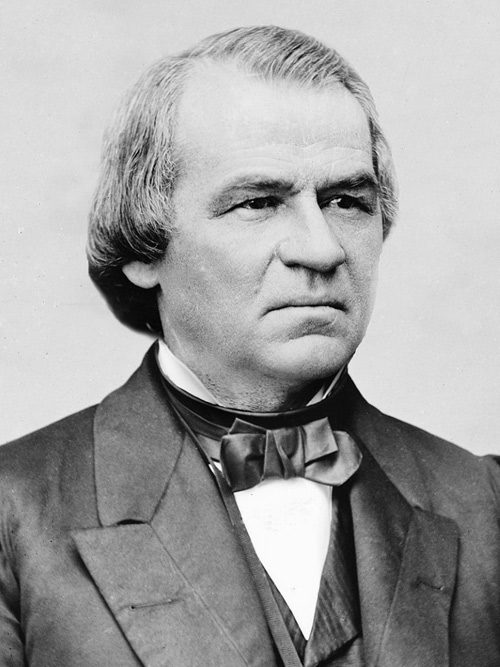
Johnson continued his pattern of belligerent and bellicose public statements as President. When supporters came to the White House in February 1866 for a Washington’s Birthday celebration, Johnson addressed them in another long, rambling speech, highlighting his own accomplishments more than 200 times and attacking “men still opposed to the Union” who were “as much laboring to pervert or destroy [fundamental American principles] as were the men who fought against us.” When pressed by audience members, he named Congressman Thaddeus Stevens and Senator Charles Sumner (among others) as these enemies. In August and September of that year he would embark on a national speaking tour unprecedented for a sitting president; known as the “Swing Around the Circle,” the tour featured more than twenty rallies in which Johnson continued to attack Congressional “enemies” and make the case for his divisive Presidential Reconstruction policies ahead of the November midterm elections.
Those extreme Presidential Reconstruction policies truly defined Johnson’s divisive and disastrous administration, both on their own terms and in contrast to what might have been the case had Lincoln not been killed. Although Johnson had been perceived as a moderate on issues of slavery and sectionalism prior to and during the Civil War, as president he revealed himself to be both a staunch ally of the neo-Confederate South and a virulent white supremacist. Among his earliest presidential proclamations, Johnson first recognized a provisional Virginia government that was practicing policies of forgiveness toward ex-Confederates and then provided federal amnesty for nearly all ex-rebels. He went on to support additional amnesty policies such as one that allowed ex-Confederates (such as former vice president of the Confederacy Alexander Stephens) to serve in Congress; since Johnson’s administration likewise opposed proposals for African American voting rights, nearly all of the Southerners elected to Congress in these early post-war years were former Confederates.
Johnson’s opposition to post-war rights for African Americans went far beyond opposing suffrage proposals. In February 1866 he vetoed a bill that would have extended the vital operations of the Freedmen’s Bureau beyond the agency’s scheduled 1867 abolition, claiming that the law “would not be consistent with the public welfare.” In March of the same year he vetoed the groundbreaking Civil Rights Bill, arguing in his veto message that “the distinction of race and color is by the bill made to operate in favor of the colored against the white race.” Johnson also opposed the 14th Amendment and campaigned extensively (if unsuccessfully) against its ratification by the states, solidifying his administration’s overall hostility to nearly all Reconstruction measures that focused on civil rights rather than reintegrating the Confederate South into the nation as smoothly as possible.
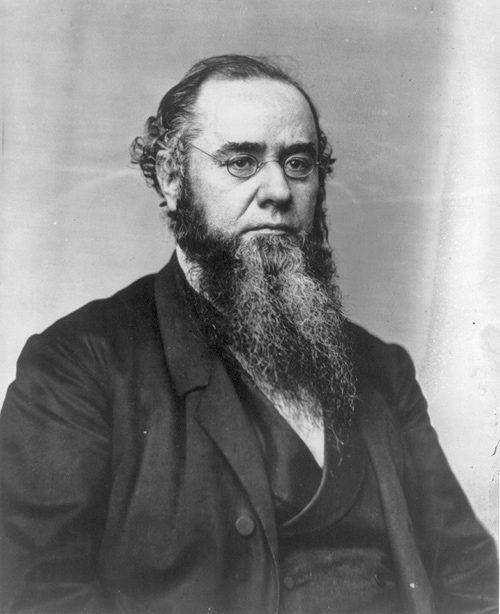
All those conflicts contributed to Johnson’s February 1868 impeachment by the House of Representatives, but it was his blatant, authoritarian violation of a specific law that directly precipitated the Congressional action. During his 1866 speaking tour, Johnson had pledged to fire Cabinet secretaries who did not agree with him (especially those who had been appointed under Lincoln), and in March 1867 he vetoed the Tenure of Office Act, which required Senate approval for such firings; Congress overrode his veto and passed the act into law. Throughout that year Johnson battled with Secretary of War Edwin Stanton, a Lincoln appointee and advocate of Congressional Reconstruction, harsher treatment of former Confederates, and African American rights. In August, with Congress out of session and unable to approve any Cabinet actions, Johnson demanded Stanton’s resignation; when Stanton refused, Johnson suspended him and replaced him with General of the Army Ulysses S. Grant. The conflict continued for many months, and when Johnson permanently dismissed Stanton in February 1868 without gaining Senate approval as required by law, the House of Representatives voted 128 to 47 to impeach.
After a three-month trial in the Senate, featuring so much wheeling and dealing that Johnson and his allies would later be investigated by Representative Benjamin Butler for bribery, the Senate on May 16, 1868, fell a single vote short of the two-thirds majority necessary to convict the president. Johnson would complete the remainder of his term, but as a deeply unpopular president; even his own Democratic Party denied him the 1868 presidential nomination in favor of former New York Governor Horatio Seymour (who would lose to the Republican nominee Ulysses S. Grant). On Christmas Day, 1868, Johnson took advantage of one of his last opportunities to further his neo-Confederate and white supremacist agendas, issuing a blanket amnesty that covered all former Confederates including the Confederate President Jefferson Davis.
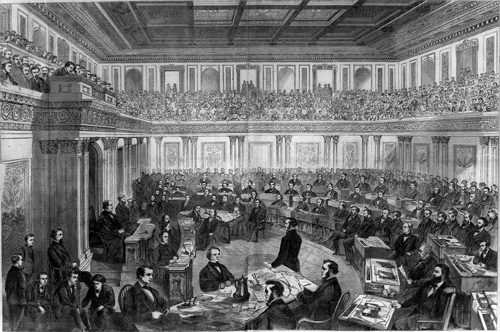
Johnson’s political career did not quite end with Grant’s election, as he made a successful run for a Tennessee Senate seat (at that time still decided by the state legislature) in early 1875. He would only serve for a few months before dying unexpectedly of a stroke in July, but during that time expressed his neo-Confederate views one last time (his only official remarks during his brief Senate term), criticizing Grant’s use of federal troops in Louisiana and asking, “How far off is military despotism?” One final belligerent and extreme remark from a president who remains one of the most divisive and destructive in American history.
10 Comics You Should Read Right Now
Read our article, Be Heroic! It’s International Read Comics in Public Day!
Comics aren’t just for ten-year-old boys anymore. Which comics should you be reading? There are thousands of series to choose from, so where’s a beginner to start?
That’s where I come in. I’m the resident comic book guy, and that’s because I’ve lived the entire cycle from fan to comics journalist to published pro comic book writer. This isn’t an exhaustive list by the stretch of anyone’s imagination, but it might provide some hints of where you might like to start. I don’t list every creative contributor to every volume mentioned, but that in no way diminishes the contributions of the writers, artists, letterers, colorists, and editors that work hard every day to entertain their readers.
1. If You Like Marvel Movies
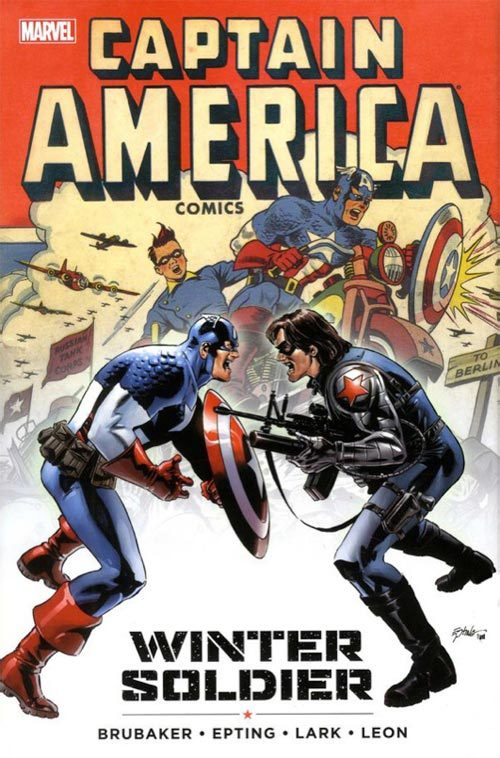
You might have 10 years of the Marvel Cinematic Universe, but you’ve got about 79 years of Marvel comics. A few gems that might pique the interest of the Marvel moviegoer include Captain America: The Winter Soldier by Ed Brubaker and Steve Epting, the Hawkeye solo series by Matt Fraction and David Aja, any Thor book written by Jason Aaron, the various volumes of Guardians of the Galaxy written by Dan Abnett and Andy Lanning, Black Panther: A Nation Under Our Feet by Ta-Nehisi Coates and Brian Stelfreeze, and the original Infinity Gauntlet by Jim Starlin, George Perez, and Ron Lim.
2. If You Like the Justice League
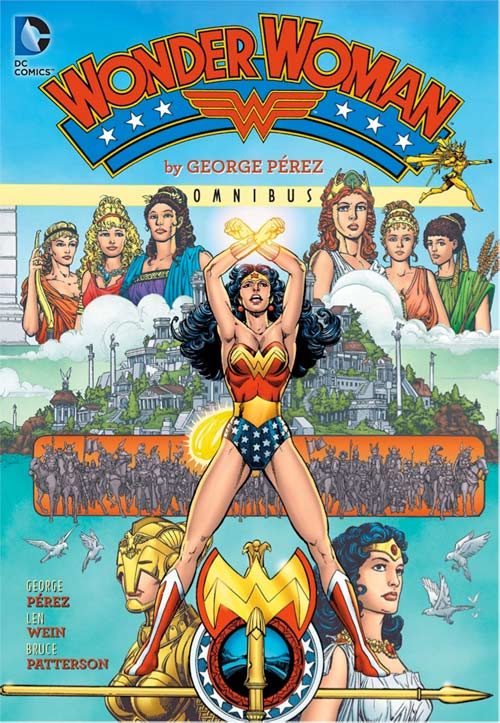
So you grew up with the Super Friends or Justice League on TV and you love the Big Guns of the DC Universe. You’re in luck: You have some of the most acclaimed comics ever ahead of you. Check out 1986’s The Dark Knight Returns by Frank Miller and Klaus Janson, which set the stage for the Batman of the movies. Grant Morrison and Frank Quitely’s All-Star Superman captures the essence of the Man of Steel. The various volumes of Wonder Woman by George Perez give you some classic Diana stories. And Grant Morrison’s masterful run on JLA with Howard Porter and others redefined the group for the modern audience.
3. If You Like Biographies/Autobiographies
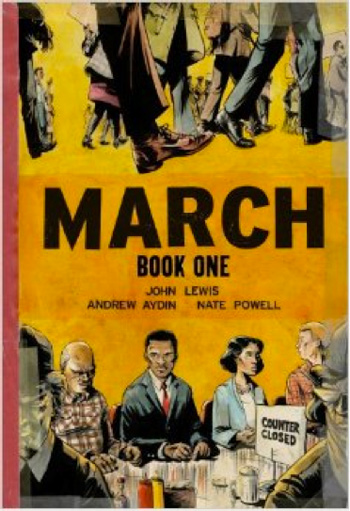
Comics are not just super-heroes. Super-heroes are the “cop show” of comics; there are a lot of them out in there in a lot of flavors, but they aren’t the only thing to watch. In fact, a number of incredible biographies exist in comic form. One of those is The Fifth Beatle: The Brian Epstein Story by Vivek J. Tiwary, Andrew C. Robinson, and Kyle Baker; it tells the story of the Fab Four’s visionary but doomed manager. A towering achievement in comics bio (and autobio) is Top Shelf’s March trilogy by John Lewis, Andrew Aydin and Nate Powell. The John Lewis in question is indeed the legendary congressman that fought for civil rights, and his story is rendered wonderfully by the sublime art of Powell. One more I can’t pass up is Fun Home: A Family Tragicomic by Alison Bechdel (also known as creator of the Bechdel test). With unflinching honesty, Bechdel deals with family secrets, including her own. And there’s also Marjane Satrapi’s Persepolis and Craig Thompson’s Blankets and Art Spiegelman’s Maus . . . okay, time to move on.
4. If You Like The Lord Of The Rings, But Wish It Were Funnier
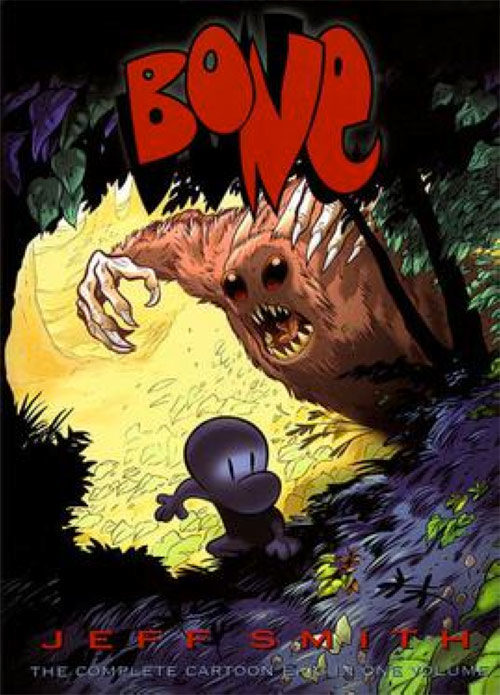
Believe me, there’s a metric ton of awesome fantasy comics out there, but I keep coming back to Bone. Jeff Smith’s magnum opus is available in one complete volume. In it, three cousins that look like funny comic strip characters stumble in a high fantasy valley on the verge of war. Becoming embroiled in events both hilarious (The Great Cow Race) and terrifying (the Lord of the Locusts may haunt your dreams), the cousins try to help their new friends while searching for a way back home. A sheer delight from cover to cover, Bone has won 10 Eisner Awards and is beloved around the world. Don’t miss it.
5. If You Like Teenage Heroes
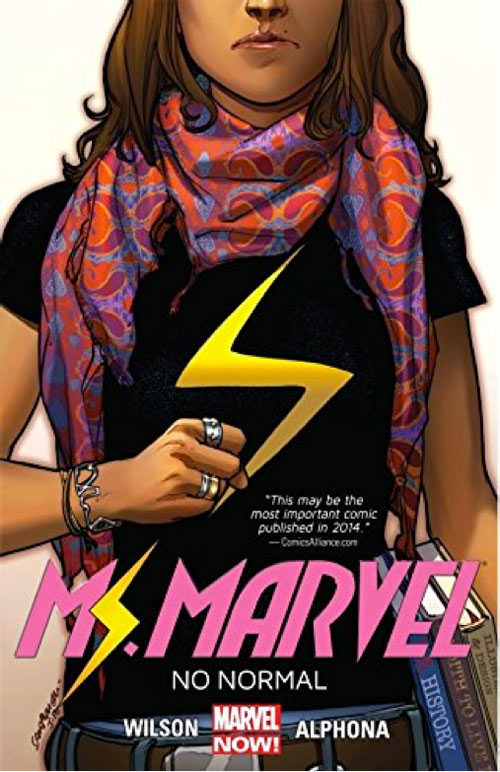
While there’s no shortage of teen heroes in comics, I’m going to focus a little bit on the Big Two of Marvel and DC. In recent years, Marvel’s had a bit of a teen hero renaissance with G. Willow Wilson’s Ms. Marvel at the forefront. Ms. Marvel is Kamala Khan, a Muslim Pakistani-American teen with shapeshifting powers and an encyclopedic knowledge of super-heroes. Though only introduced five years ago, Kamala has made her way into animation, action figures, and the comic book ranks of The Avengers. She’s also a member of teen team The Champions, which gathers a number of Marvel’s youth movement in one book. Kamala also shares the Marvel Rising animated series with The Unbeatable Squirrel Girl, a ridiculous-heroine with a thoroughly hilarious series (for you Netflix fans, she’s Luke Cage and Jessica Jones’s babysitter).
On the DC side, the terrific Super Sons books follow Superboy (Jonathan Kent, son of Clark and Lois) and Robin (Damian Wayne, son of Bruce and his enemy Talia ah Ghul). As written by Peter J. Tomasi, every issue contains at least one laugh-out-loud moment centering on the grudging friendship between the relentlessly upbeat Superboy and the comically dour Robin. Robin is also featured in DC’s young hero hang-out, Teen Titans.
6. If You Like Mysteries
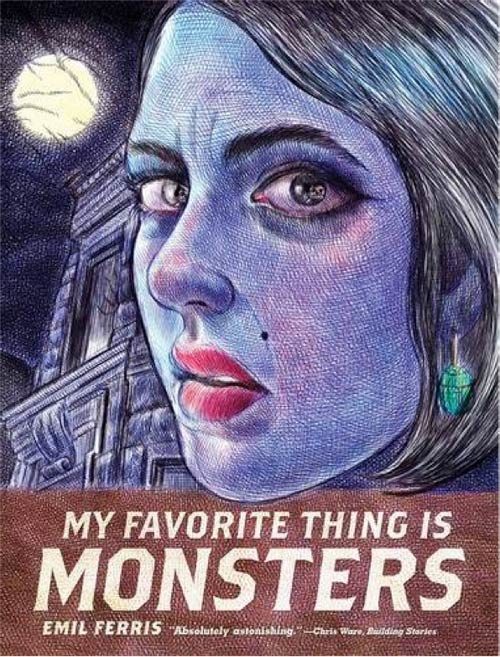
There are enough mystery series and original graph novels in comics for lit sites to run features on the top 10, or 25, or 50 mystery comics. I’ll hat-tip three. Torso, published at Image Comics by Brian Michael Bendis and Mark Andreyko, is a fictionalized account of the true story of the hunt of the Cleveland Torso Murderer of the 1930s by legendary lawman Eliot Ness. Batman: The Long Halloween by Jeph Loeb and Tim Sale gives us an early case from Batman’s career as he hunts a holiday-themed serial killer for a calendar year. The last one, My Favorite Thing is Monsters, published by Fantagraphics, has a story behind it that’s almost more remarkable than the book itself. After suffering from paralysis brought on by West Nile virus, writer and artist Emil Ferris fought her way back to recovery while working on her 700-page mystery. It won three Eisner Awards last year and is widely considered the best graphic novel of 2017.
7. If You Like Shakespeare, Gothic Culture, and General Amazement:
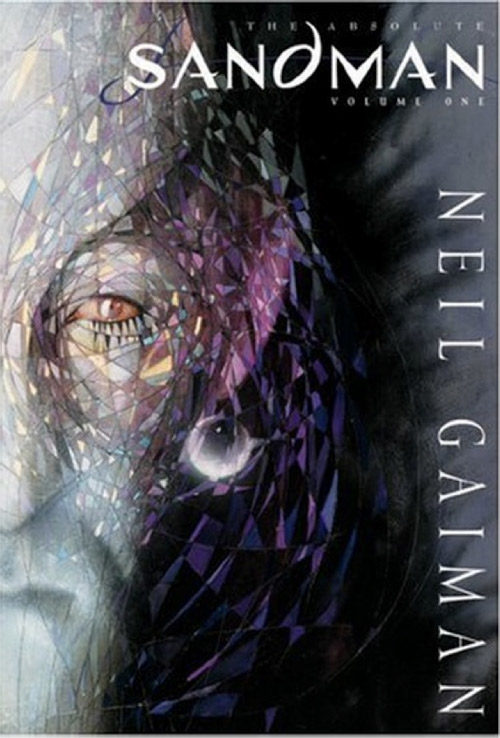
The Sandman series, by writer Neil Gaiman and a murderer’s row of incredibly talents artists, remains one of the great achievements in comics. After a period of captivity, Morpheus, the king of dreams, tries to reunite with his fractured family, including his loveable sister Death. A high point in fantasy, the series defied conventions and came to stand for “literary comics” in the best possible sense. Gaiman, of course, has continued to produce stellar works in comics, prose, and other media (American Gods, anyone?).
8. If You’re Anywhere from K-12
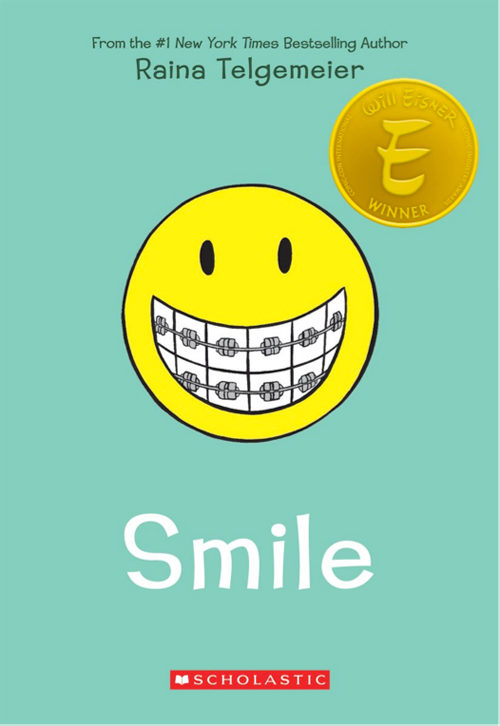
If you don’t know Raina Telgemeier, your kids or grandkids do. A one-woman brand that means great, heartfelt comics, Telgemeier built up a solid resume of work before breaking out with the autobiographical Smile in 2010; it stayed on The New York Times bestseller list for more than 220 weeks. Each subsequent release (Drama, Sisters, and Ghosts) has only expanded her popularity and demonstrated her unique sensitivity to the real issues affecting young people. To borrow another publishing phrase, she’s a wonder.
9. If You Like It Deconstructed
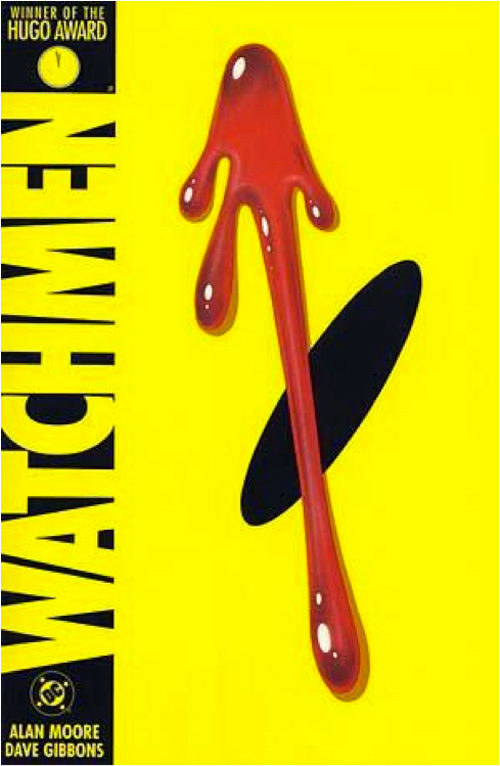
Alan Moore got big in super-hero comics, then he wanted to burn it all down. Seen by many as the author laureate of the comics form, Moore rebuilt DC’s Swamp Thing into a work of post-modern horror before turning his attention to the entire super-hero genre. Watchmen, with Dave Gibbons, remains a perennial bestseller and one of the things that pushed super-stories into the darkness in 1986. Since then, his vast repertoire of books like V for Vendetta, From Hell, The League of Extraordinary Gentlemen, and more continue to showcase his stunning attention to detail and his mastery of a medium that he keeps pushing toward maturity.
10. If You Like to Be Scared
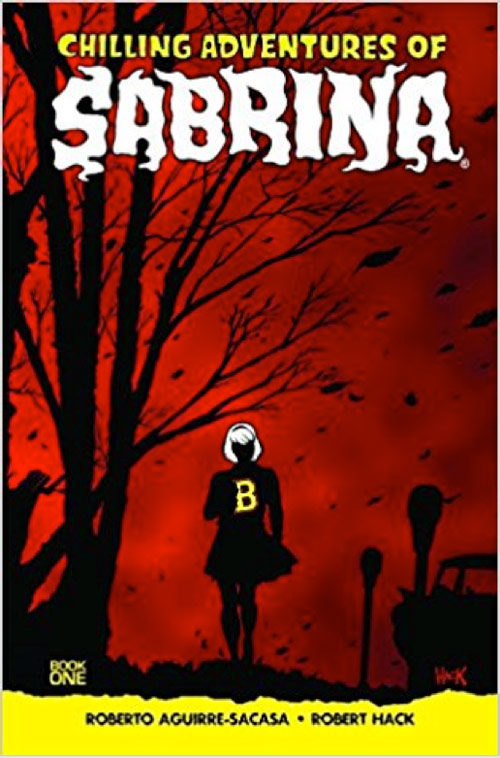
Well, you’re in luck. Horror abounds in comics. Easily the bestselling horror series of the last decade is The Walking Dead, basis for the TV show with a massive fanbase; if you follow Rick, Michonne, and Negan, it all started here. I also heartily endorse Uzumaki by Japanese horror manga legend Junji Ito; a masterwork of paranoia and Cronenbergian “body horror,” it’s an incredible unsettling read. And if you’re wondering why I haven’t mentioned Archie yet, that’s because I’ve been saving it. In the past few years, Archie Comics have totally reinvented themselves with a variety of series that take the characters into startling new directions. Two of the best are the horror titles Afterlife with Archie and Chilling Adventures of Sabrina, both written by Archie Comics Chief Creative Officer Roberto Aguirre-Sacasa (who also developed, executive produces, and writes for the Archie-derived TV series Riverdale).
Get out to your own local comic shop (or local library; graphic novel sections are huge there) and find what you like. And feel free to make your own recommendations in the comments below!
Be Heroic! It’s International Read Comics in Public Day!
Read our article, 10 Comics You Should Read in Public Right Now.
Comic book movies rule the world. Comic books, on the other hand, still carry a bit of social stigma that was already old in the 1950s. In 2010, Brian Heater and Sarah Morean of the now-defunct alternative comics site Daily Cross Hatch came up with the idea of International Read Comics in Public Day. Their plan was to promote comics and shake off any embarrassment that one might feel by reading comics in public by turning it around and celebrating the act. The chosen date, August 28th, is also the birthday of The King, Jack Kirby.
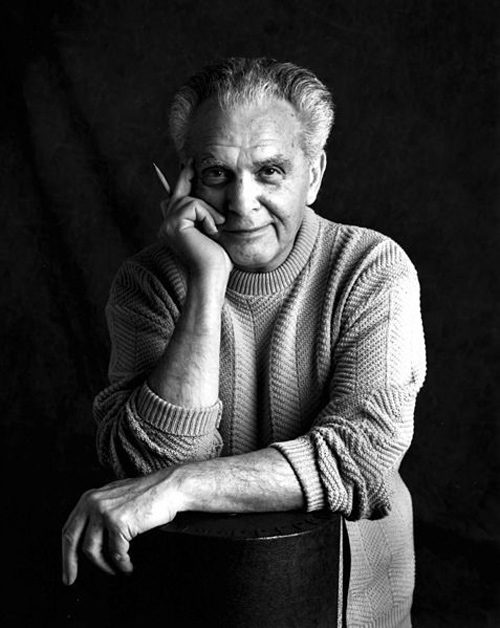
For those unaware, Kirby’s birthday might be the most appropriate day possible. Born in New York in 1917, Kirby grew up to be a working comic artist by 1936. Collaborating with Joe Simon in the 1940s, he co-created Captain America. With Stan Lee, he co-created the foundation of the Marvel Universe, including the Fantastic Four, Iron Man, Thor, the Hulk, the Avengers, the X-Men, Doctor Doom, the Inhumans, the Silver Surfer, Black Panther, and dozens more. Kirby would later work for DC Comics in the 1970s, where he created familiar characters like Darkseid, Mister Miracle, the New Gods, Kamandi, and The Demon, Etrigan. His mind-bending designs and panel-breaking art style seemed to erupt through the page, influencing generations of artists and filmmakers that followed in his wake. Nicknamed “The King” by Lee, Kirby worked in comics, animation and film, including a number of creator-owned projects, until his death in 1994.
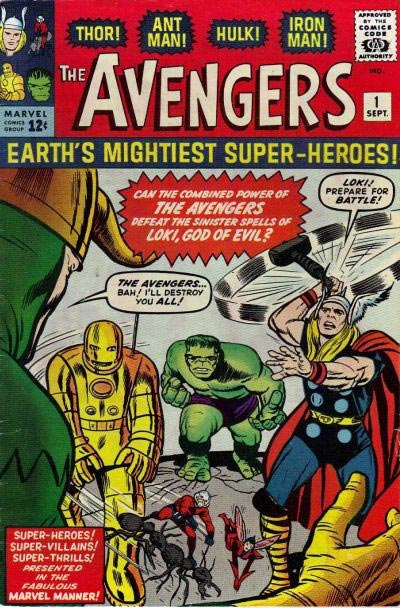
Kirby and Lee’s Marvel work helped repopularize comics in the 1960s, with Lee undertaking many speaking tours and appearances to evangelize for the form. Readership hit massive sales highs in the late ’80s and early ’90s before a speculator bust (caused when a number of new publishers and big events from established publishers saturated the market, allowing collectors little to no return on investment) crashed the back-issue market. Since then, comics have retrenched and conquered popular culture through mass media. Though comic-based films like 1978’s Superman The Movie would occasionally appear, the modern age of comic-based films didn’t begin in earnest until Blade staked out more mature territory in 1998. Today, super-heroes rule the box office, run rampant on television and streaming services, and have significant presence in the toy, video game, and apparel sections of mainstream stores. The comics form itself continues to thrive, having battled for acceptance (and frequently winning) in libraries, school curricula, and booksellers outside the comic shop. As Harvey Pekar, creator of American Splendor, once noted, “Comics are words and pictures. You can do anything with words and pictures.”

Current comic book professionals regard Read Comics in Public Day as an important yearly event. Jamal Igle, creator of Molly Danger and co-creator of the upcoming series, The Wrong Earth, says, “When I was a kid, I had a Spanish teacher who said ‘It doesn’t matter what you read, as long as you’re reading.’ It’s something I like to keep in mind as a creator and as a father. Reading comics in public day is a great way to encourage literacy in general. Selfishly, it’s also great to remind parents that comic books still exist, and are an excellent tool to get reluctant readers into the fold.”
If you’re curious if there’s a comic out there for you, the short answer is YES. Comics aren’t just bound to the super-hero genre. There’s horror, mystery, biography, comedy, and more, with as many books for mature readers as there are for young ones. You’re not bound by print, either, as you can buy digital comics from the likes of digital shop Comixology and find many independent webcomics online. A good pair of places to start is the Comic Shop Locator Service, which will lead you to a store near you, and the site for the Will Eisner Comic Industry Awards, aka The Eisners (basically the Oscars of comics), which contains a list of all the past winners so that you can start with the best. So get out, enjoy your day, and don’t forget the comics.
Five Things You Didn’t Know About the “I Have a Dream” Speech
Few words echo through history with the conviction and power of the “I Have a Dream” speech, given by Martin Luther King, Jr. 55 years ago today. Frequently ranked as the top speech in American history by polls and scholars, the address served as the defining moment of the March on Washington for Jobs and Freedom. King and other organizers mounted the march in support of civil rights legislation initiated by President John F. Kennedy. All of that could be considered common knowledge; here are a few things that you might not know about the speech and the events surrounding it.
The Speech.
1. It Wasn’t King’s First “Dream” Speech
When you look back at Dr. King’s oratorical history, it’s obvious that he liked to use dream allusions and imagery. It’s not difficult to understand why, as the civil rights struggle is essentially a dream of equality. King used that theme in a speech he gave to the NAACP in 1960 called “The Negro and The American Dream” in which he called America “a dream yet unfulfilled.” The speech emphasized that contributions that black Americans had already made and could continue to make and decried institutional racism, noting, “The primary reason for uprooting racial discrimination from our society is that it is morally wrong. It is a cancerous disease that prevents us from realizing the sublime principles of our Judeo-Christian tradition. It relegates persons to the status of things.” King would use the “dream” concept in further speeches in North Carolina in 1962 and Detroit in 1963, among other occasions.
2. The Speech Caught the Attention of the FBI
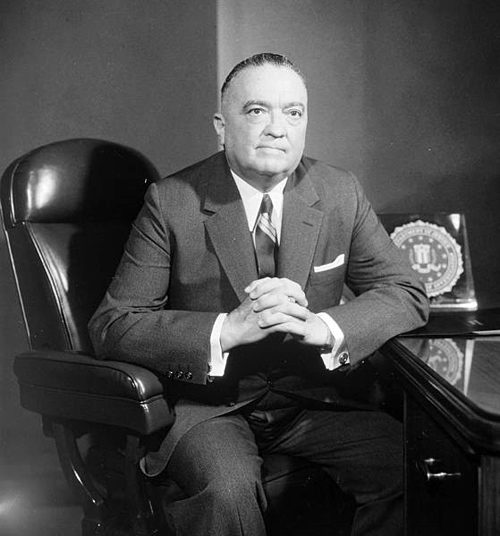
From 1956 to 1971, the FBI ran a series of operations that sought to dismantle domestic political groups. The umbrella name was COINTELPRO, which was derived from Counter Intelligence Program. Although the projects began by targeting the Communist Party in the United States, they expanded widely and involved infiltration, harassment, and, at times, violence directed against groups as diverse as the civil rights movement, feminist organizers, the Black Panther Party, the KKK, Puerto Rican independence activists, and more. King himself was a specific and frequent target of investigations and wiretaps as some people inside the Bureau viewed him as subversive. In Tim Weiner’s 2012 book, Enemies: A History of the FBI, Weiner offers a quote from FBI director J. Edgar Hoover in the wake of the “Dream” speech in which he says, “We must mark [King] now if we have not done so before, as the most dangerous Negro of the future in this nation from the standpoint of communism, the Negro, and national security.” The operation was overtly halted in 1971 after it was exposed by the activist group the Citizens’ Commission to Investigate the FBI.
3. It Made History in 17 Minutes
The speech itself took King 17 minutes to deliver. It has an official count of 1,667 words. That’s just over six times longer than Lincoln’s “Gettysburg Address,” which is widely considered King’s model for “I Have A Dream.”

4. The Speech Had Other Unshakable Lincoln Connections
The opening of the “I Have A Dream” speech includes the words “Five score years ago,” followed by a direct reference to the signing of the Emancipation Proclamation, the document that freed all the enslaved people in the south. Slavery officially ended in the United States with the passage of the Thirteenth Amendment in 1865. Of course, the speech was delivered at the incredibly appropriate location of the steps of the Lincoln Memorial. Today, a marble marker on the steps memorializes the occasion.
5. The Speech Immediately Changed King’s Life
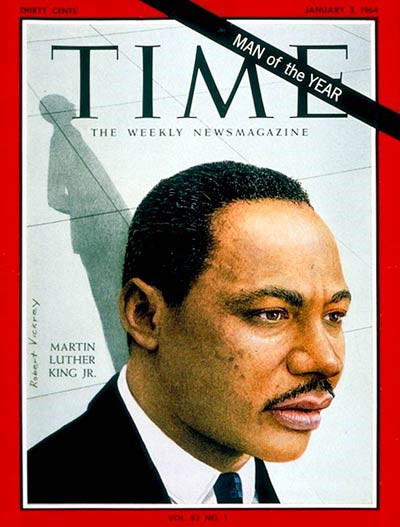
Scholars, journalists, and politicians have long discussed what the speech meant for the overall civil rights movement and what it continues to mean to people today. The immediate aftereffect for King is that it launched him into the stratosphere of political leadership in America. Not that he hadn’t already made an enormous reputation for himself, but in the time that followed, King became Time’s Man of the Year for 1963 and the youngest person awarded the Nobel Peace Prize in 1964. Though his life was unfortunately ended less than five years after delivering the speech, his legacy has proven immortal. The man is gone, but his dream lives.
Your Weekly Checkup: Chocolate Is Good for You
“Your Weekly Checkup” is our online column by Dr. Douglas Zipes, an internationally acclaimed cardiologist, professor, author, inventor, and authority on pacing and electrophysiology. Dr. Zipes is also a contributor to The Saturday Evening Post print magazine. Subscribe to receive thoughtful articles, new fiction, health and wellness advice, and gems from our archive.
Order Dr. Zipes’ new book, Damn the Naysayers: A Doctor’s Memoir.
It’s nice to know that some foods that taste good, such as coffee, wine, and the Mediterranean diet can also be good for you. Multiple studies indicate that chocolate falls into this category.
Dark chocolate in particular has been shown to reduce blood pressure, inflammation, and the amount of bad cholesterol (LDL) in the blood, and improve insulin effectiveness and blood vessel health. Chocolate consumption has also been linked to a decrease in heart failure, diabetes, atrial fibrillation, strokes and heart attacks.
The process of manufacturing dark chocolate retains a chemical compound called epicatechin thought responsible for the major health benefits of chocolate, whereas milk chocolate does not contain significant amounts of epicatechin.
Several studies suggest that dark chocolate from flavanol-rich cacao beans may enhance blood flow to central and peripheral nervous systems, improve cardiovascular function, and retard memory loss and other signs and symptoms of degenerative diseases, including Alzheimer’s and Parkinson’s diseases. The cacao flavanols in dark chocolate have antioxidant effects that retard and partially reverse degenerative changes in various diseases. Dark chocolate consumption also has been associated with enhanced mood and cognition. A recent study of 30 adults tested the impact of dark versus milk chocolate on vision. They noted small enhancements in visual acuity and large-letter contrast sensitivity and a slightly larger improvement in small-letter contrast sensitivity after consumption of dark compared with milk chocolate.
Not all studies on chocolate have been positive. Some negative outcomes might be expected because chocolate contain sugar, caffeine, and calories so that higher amounts of intake might be harmful. That raises the question of whether there might be a dose response association between chocolate intake and cardiovascular outcomes. That is, might there be an optimal protective dose of chocolate that decreases the risk of cardiovascular disease, with lower amounts having no effect and higher amounts causing harm?
A recent study addressed that question by reviewing and compiling information from fourteen reports on over 400,000 participants. The authors found an overall relative risk reduction of total strokes and heart attacks with chocolate intake, the strongest reduction observed between about 45 g/week (a chocolate single or square per day or a chocolate snack bar per week) and 60–75 g/week. The protective effect for cardiovascular disease was lost when chocolate intake exceeded 100 g/week (two chocolate snack bars per week). One needs to accept these results cautiously because chocolate consumption was self-reported, the type of chocolate could not be identified (which may underestimate the protective effects of dark chocolate), and one can only conclude an association between chocolate consumption and cardiovascular disease, not necessarily causality.
So, enjoy your daily dark chocolate wafer that not only tastes good but is good for you.
Getting Up Close with Polar Bears — While We Still Can
“Hello, beautiful,” the guide says, in the gentlest tone, to the polar bear lumbering toward us. We’d been watching her feed on berry-laden bushes on the muddy shores of Hudson Bay for about 20 minutes before she noticed us and headed over to investigate her audience — a dozen people from all over the world standing awestruck in matching red Gore-Tex jackets.
“What’cha doing sweetie?” he tries again as the bear keeps coming, slowly, cautiously.
Our three guides have handfuls of rocks in their hands and rifles slung over their shoulders. But the weapon they use today and most days is sound. At about 40 yards, one of the guides bangs a rock against our metal buggy and the bear jumps back, startled. She veers right and saunters away, looking over her massive shoulder to give us a final backward glance.
“Polar bears are like grizzly bears on Valium, they’re just so calm most of the time. But that doesn’t mean they can’t have a bad day.”
“From a predictability perspective, polar bears are like grizzly bears on Valium, they’re just so calm most of the time,” says Andrew Derocher, a University of Alberta professor who has been studying the bears for 35 years. “But it doesn’t mean they can’t have a bad day or bad interaction or just change their behavior. And that’s always the unknown.”
The female we’d been watching is one of about 800 bears that come to the western shores of Hudson Bay when the sea ice melts around June and July. They pass the warmer months lounging around, conserving energy, and waiting for the ice to come back in November. When it does, the bears climb back on and spend the winter moving over the frozen bay and gorging on seals.
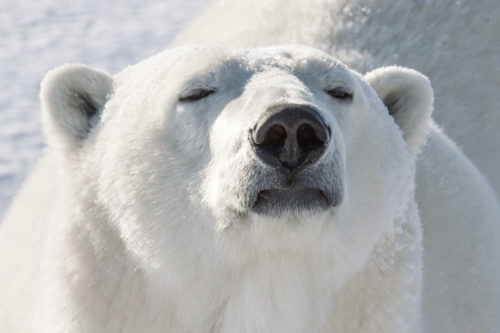
Thousands of tourists come to northern Manitoba every year to see the bears on the shoreline. The bear-watching industry started in the town of Churchill in the 1980s, when a few American journalists showed up and asked locals to drive them to the town dump to see what were then regarded as “giant white rats” scavenge in the garbage. After stories started appearing in glossy magazines, locals upped their game to accommodate the surge of tourists flocking to town. Today, one can take day trips in specially outfitted giant trucks called Tundra Buggies, or spend a week among the bears onboard a mobile hotel room, or fly into comfortable, remote lodges. The bears, meanwhile, have a new nickname: the poster children of climate change.
The bear population in Hudson Bay has been declining — as much as 18 percent from 2011 to 2016. “All indications are that Hudson Bay is not going to have polar bears in 20 or 30 years,” says Derocher. “There are so many things changing in the Arctic right now, it’s hard to predict how bears will respond. Going forward in time, changing sea ice, changing environmental conditions, competition — it’s not going to be the same as it has been in the past.”
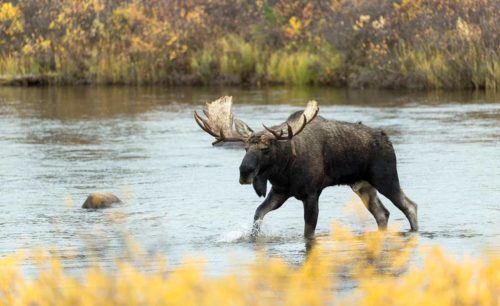
Getting There
It’s an hour-long flight from Churchill south to Churchill Wild’s Nanuk Polar Bear Lodge where we are staying, and along the way, we see a dozen or more bears lounging on the vast beaches below. Our pilot flies along the shoreline, pointing out the white blobs on the mud until we start spotting them ourselves. We land on a dirt strip on the other side of the lodge’s electric fence, where a few members of the local wolf pack sprawl out in the September sun. As our bags are unloaded, we see a black bear walk into the nearby brush. Business as usual in the wilds of Canada’s sub-Arctic.
Over the next few days, we put on our loaner red coats, pull mud-splattered blankets over our laps, and head out in open ATV buggies to look for bears, watch the wolves, and stand in the woods calling moose. Our Cree guide, Albert “Butch” Saunders, has been hunting, fishing, and trapping around Hudson Bay his entire life. He watches tracks to see where the moose might be, and when our buggies pull over, he pulls a string through a coffee canister, creating a wail that mimics the sound of a female moose. Another guide, Josh Robson, sways and dips in the long grass to impersonate a female moose. Eventually the song and dance works, and a massive bull moose emerges in the autumn mist. He doesn’t stick around long once he realizes the deception. Rather, there’s just Saunders with a big grin and a bunch of delighted people snapping pictures. Another day, as the buggies come over a crest of a hill, we see six moose running full out in the distance. More delight.

Back at the lodge, we watch wolf cubs frolic in the fall foliage through picture windows. Several scopes are set up for those who want a closer look. A week earlier, guides and guests watched through the scopes as a mama bear, her two cubs glued to her side, fended off a wolf pack. “It was terrible,” says guide Andy MacPherson of the 30-minute attack. “But I couldn’t look away.” Many wolves in this area starve to death, and taking down a polar bear would be a feast for the pack of 18. The wolves went for the bear’s neck, but she managed to fling them off and get away with her cubs. The day after we hear the tale of the fight, we see a beautiful black wolf with yellow eyes and gashes along its side. He’s in rough shape and lies down to rest under a tree, watching us watch him. I ask MacPherson which animals he was rooting for during the fight. He just shakes his head: “Nature chooses,” he says.
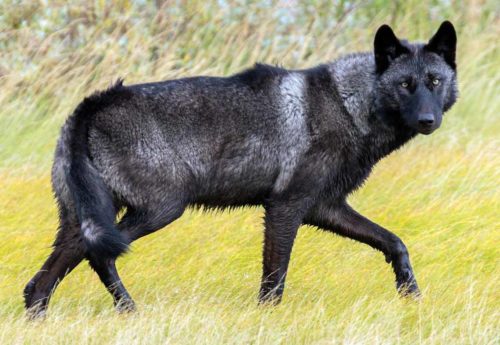
The Rules
When we’re outside the lodge’s electric fence, we have strict instructions: Be quiet. Stay close to the buggy. Do what you’re told. The guides use a careful system of deterrents to keep us and the bears safe. It starts with talking to the animals and progresses to startling them with clanging rocks or loud bangers. The rifles remain on the guides’ shoulders. “If I ever had to shoot a polar bear, I’d quit the business,” MacPherson tells me. He’s worked around bears for decades, studying how our behavior affects theirs. “Every time bears are seeing people, they’re learning, and they’re going to react differently in the future depending on what kind of interaction that was,” he says. “A negative interaction would be feeding animals — they’re going to come back. A positive interaction could be they come up and there’s no reward so you end up becoming part of the background.”
“All indications are that Hudson Bay is not going to have polar bears in 20 or 30 years.”
We climb into the buggies and travel about five miles to find a mother and her cub snuggling together on the mud. After about 20 minutes of watching them, the cub, curious, gets up and starts toward us. Mama dutifully follows. Guides MacPherson and Robson stand in front of us, rocks in hand. “Hey there, little guy — how’s it going?” MacPherson says. At the sound of his voice, the bears stop in their tracks. Eventually the cub, his fur gray with mud, gets bored of the sub-Arctic standoff and sits down. Mama bear stays up, lifting her snout to catch our scent 40 yards away. Meanwhile, Saunders stands with his broad back to all of us, scanning the horizon behind us with his binoculars.
“Time to go” MacPherson says, and we climb back in the buggies. As we drive off to the safety and comfort of the lodge, mama bear turns her head and watches us leave. I turn my head too, keeping my eyes on the polar bears as we get farther away and mother and cub turn into dots on the gray horizon, and then nothing at all.
Jennifer Allford is a freelance writer in Calgary, Canada. She writes a monthly lifestyle column in the Calgary Herald and has contributed travel stories to a number of publications, including the Toronto Star, WestJet Magazine, and Travel + Leisure. For more, visit jenniferallford.com.
This article is an expanded version of the interview that appears in the September/October 2018 issue of The Saturday Evening Post. Subscribe to the magazine for more art, inspiring stories, fiction, humor, and features from our archives.

